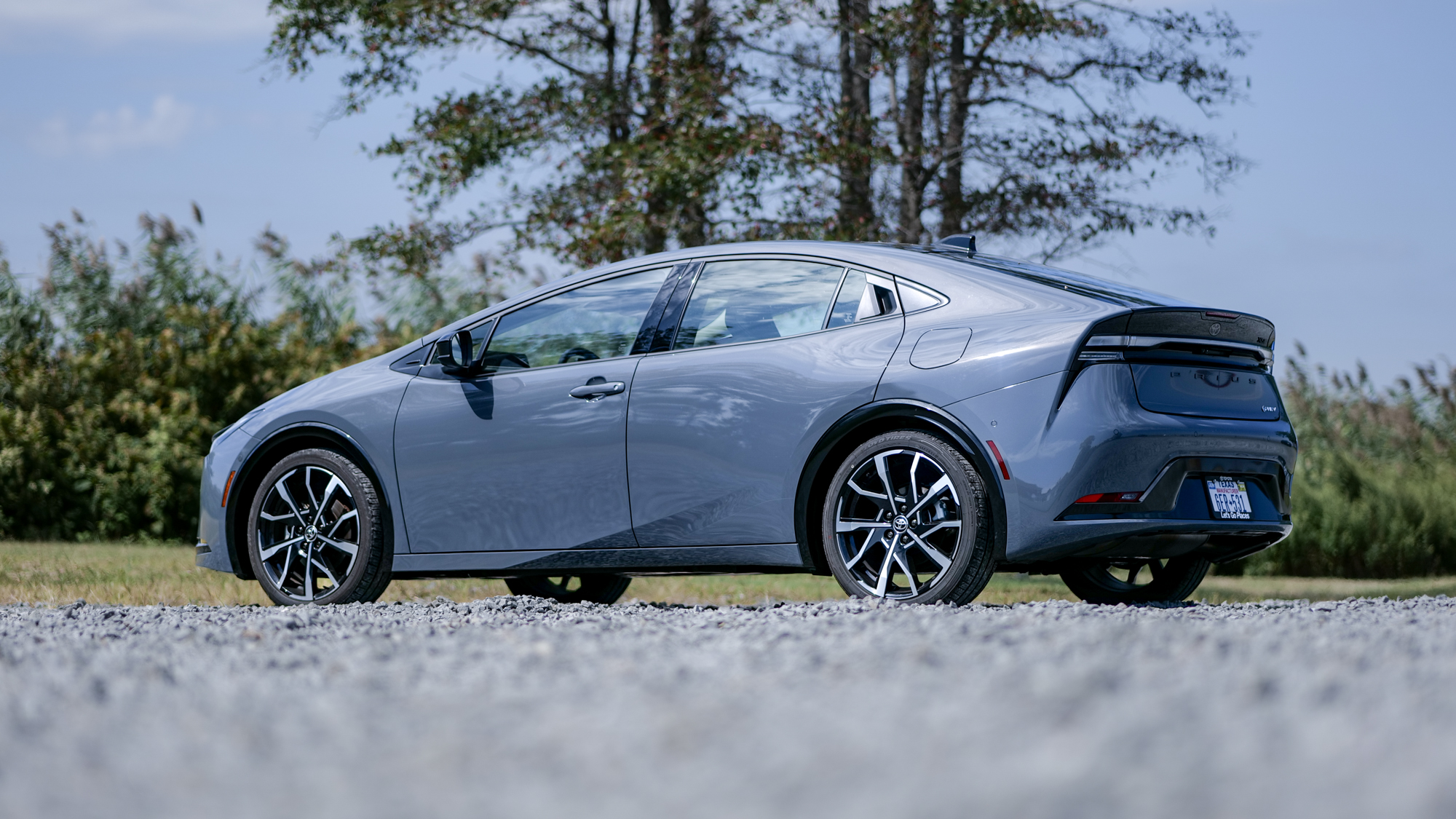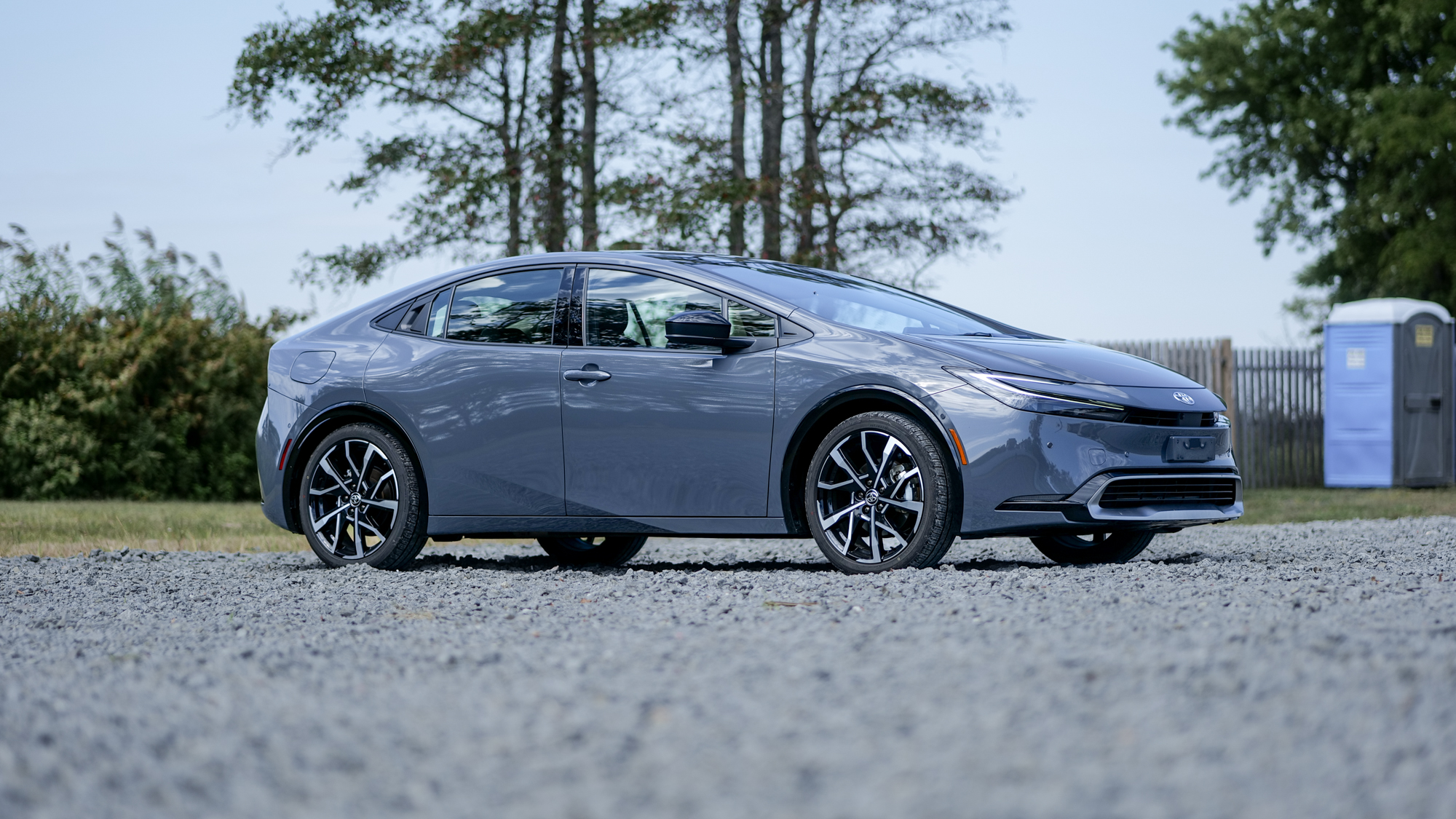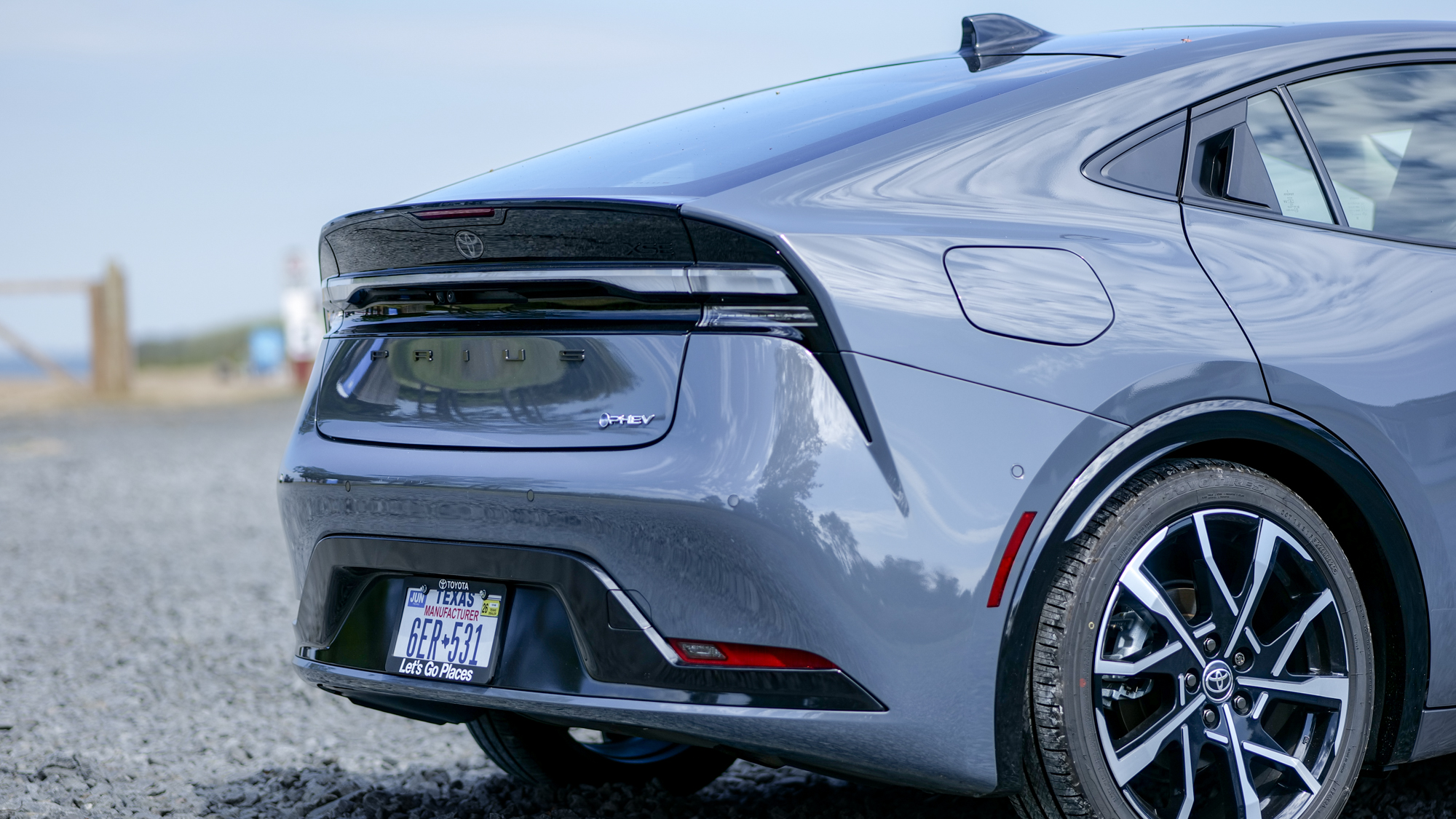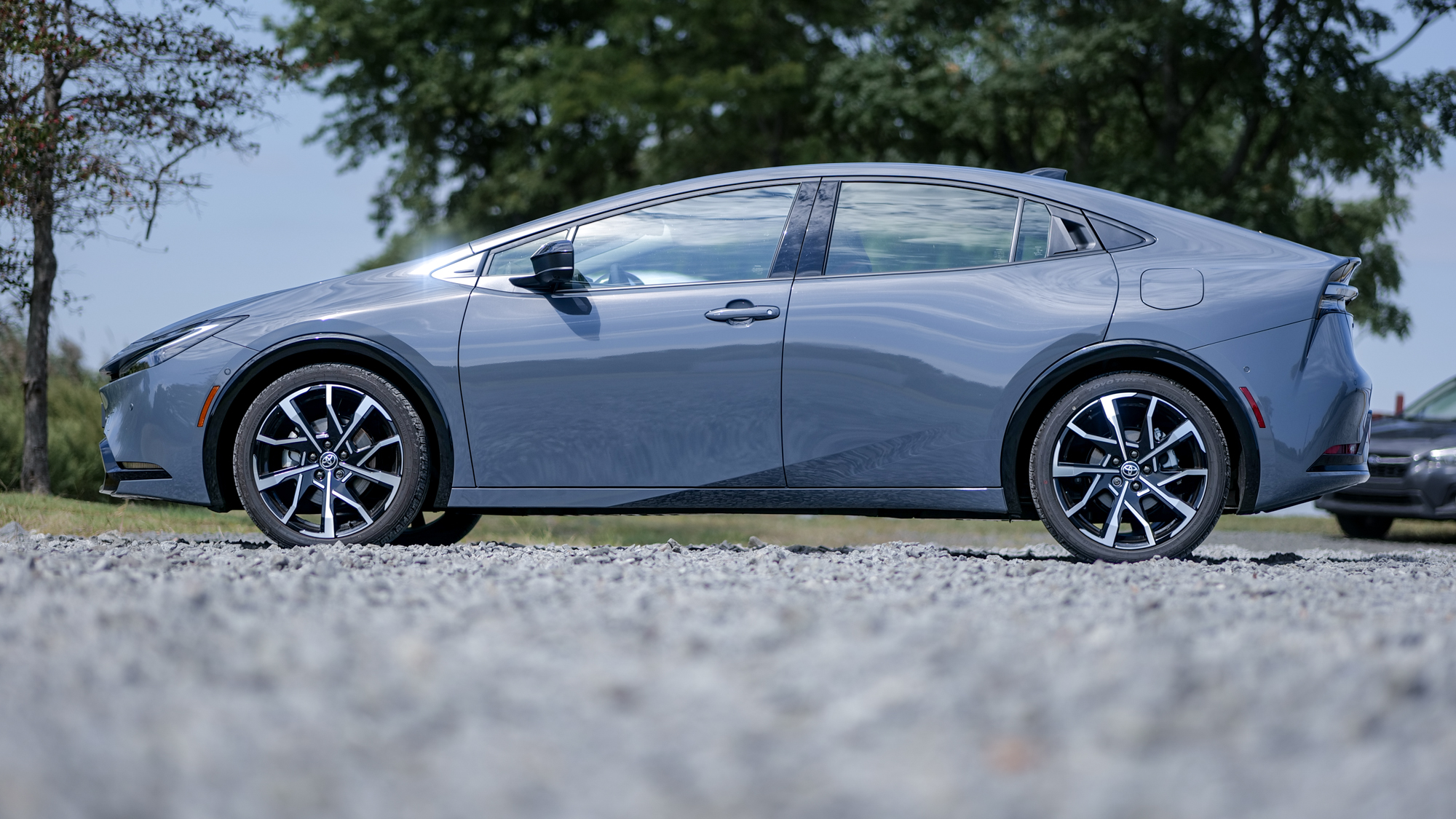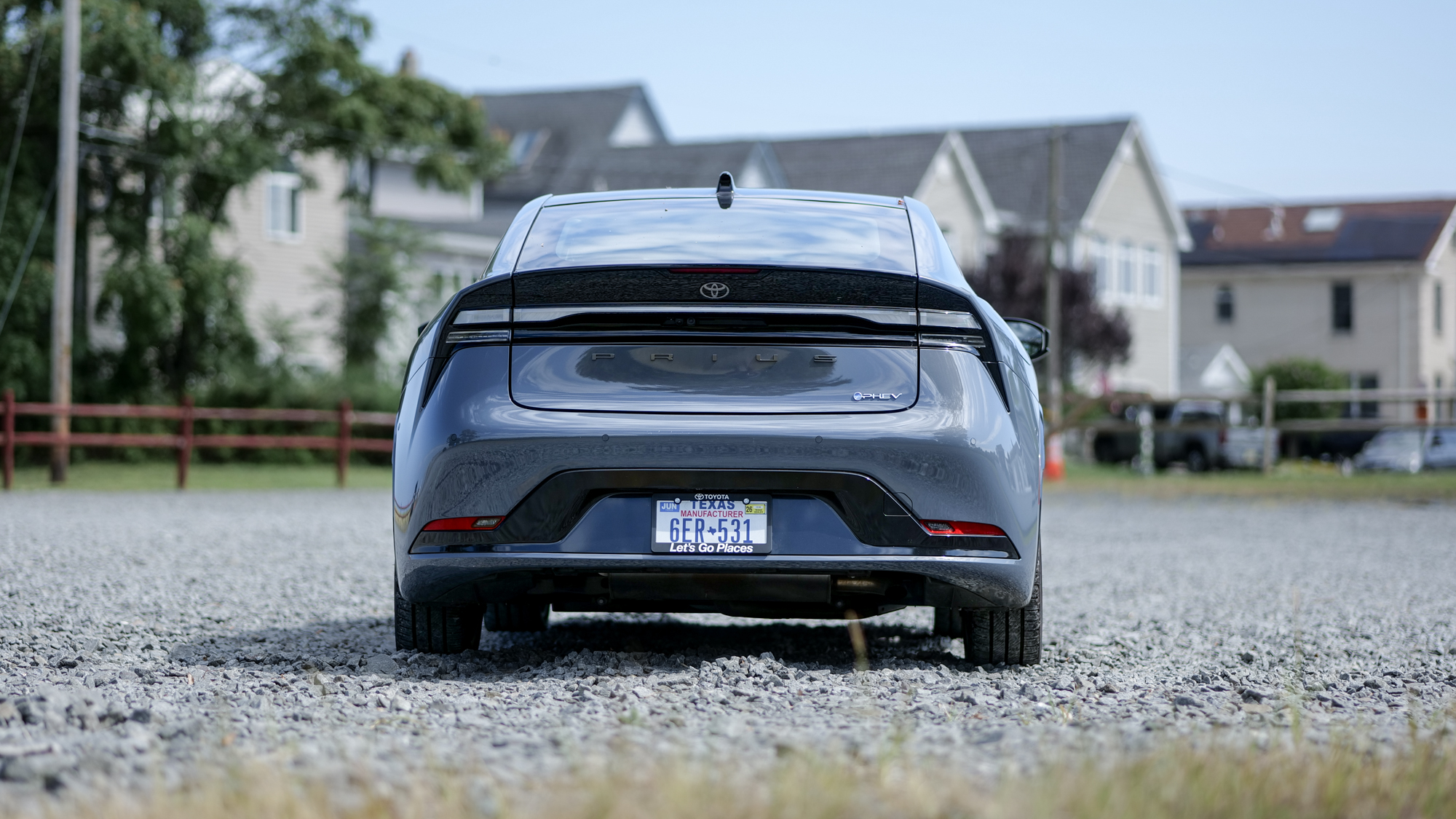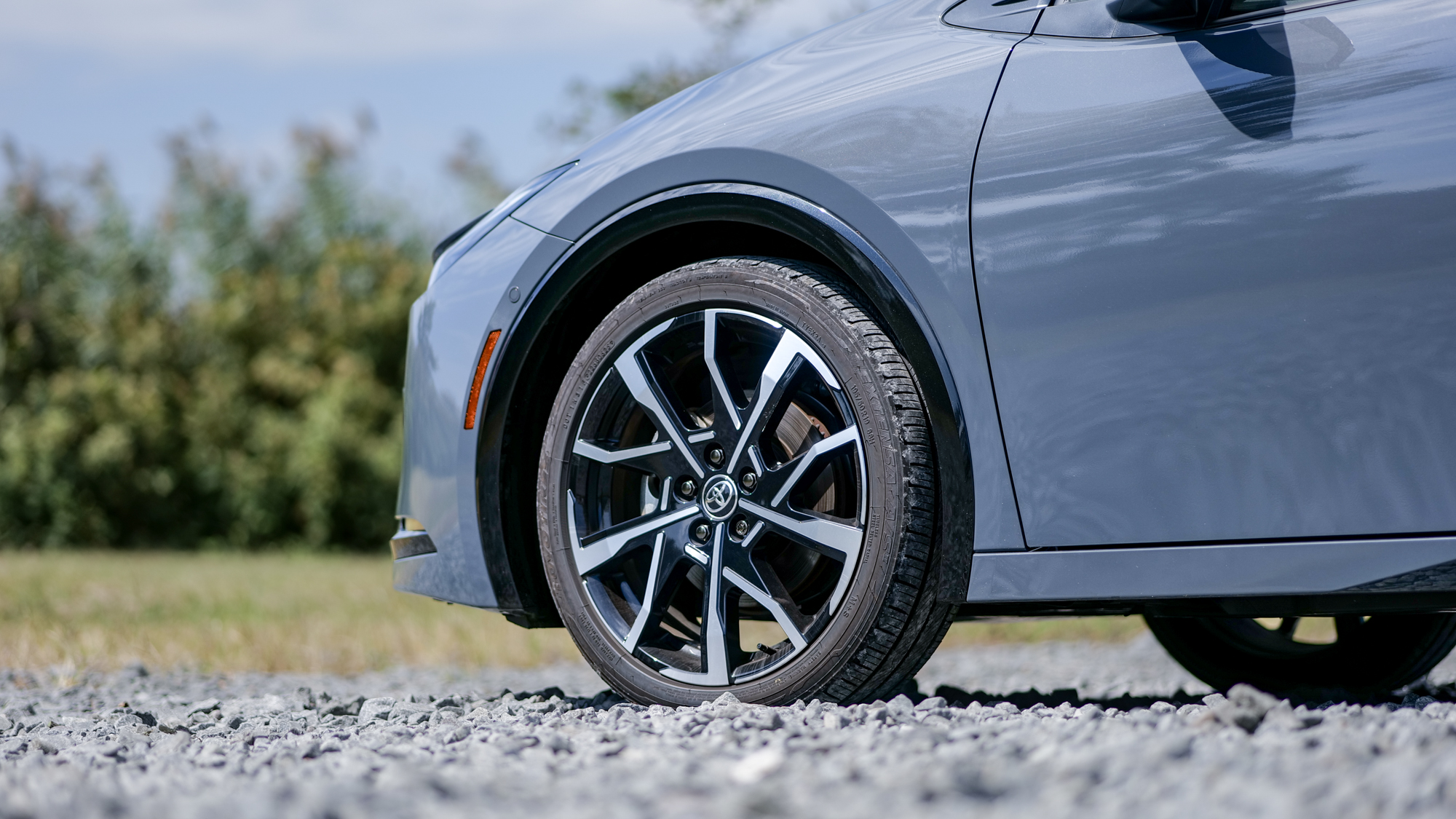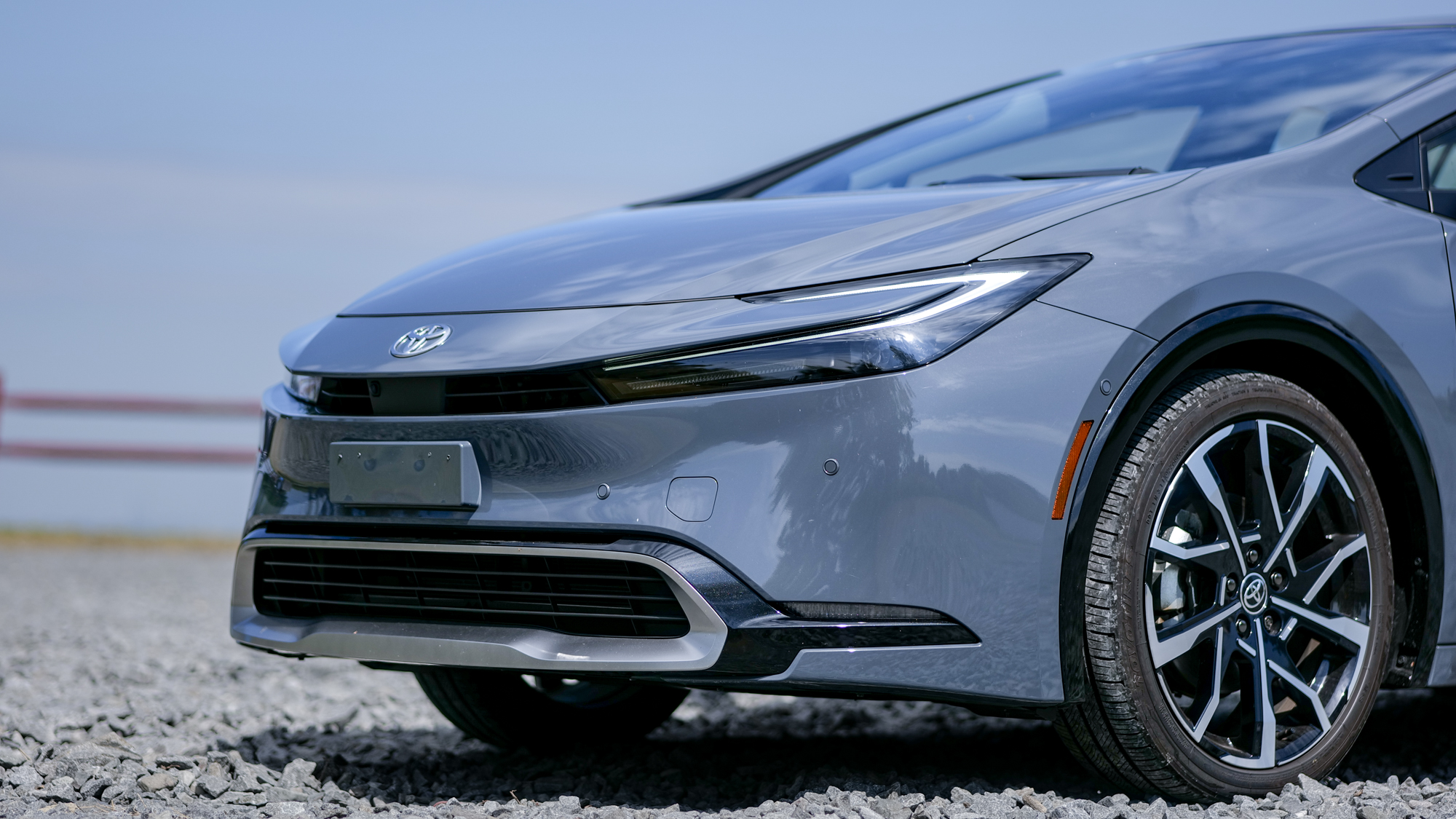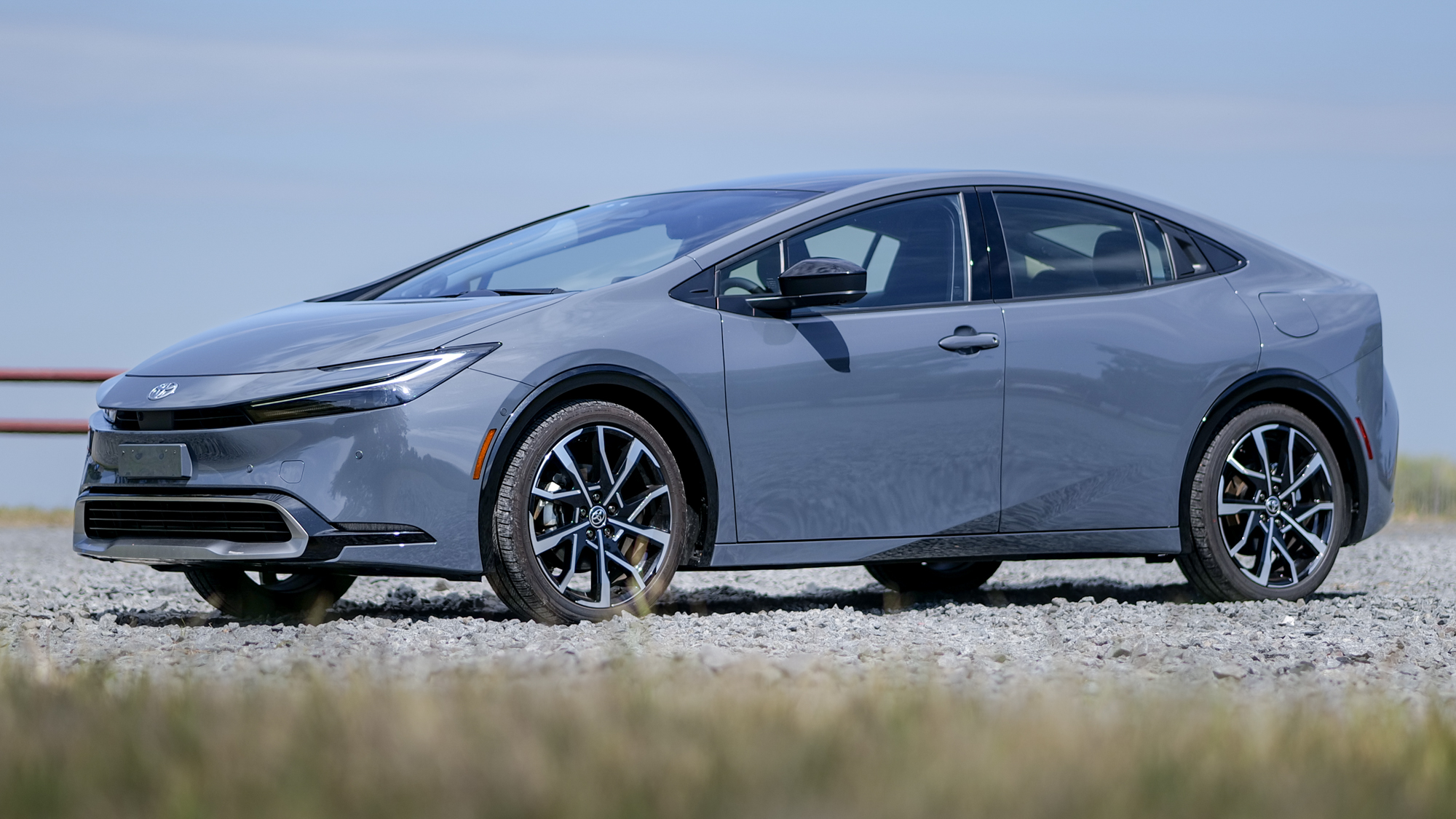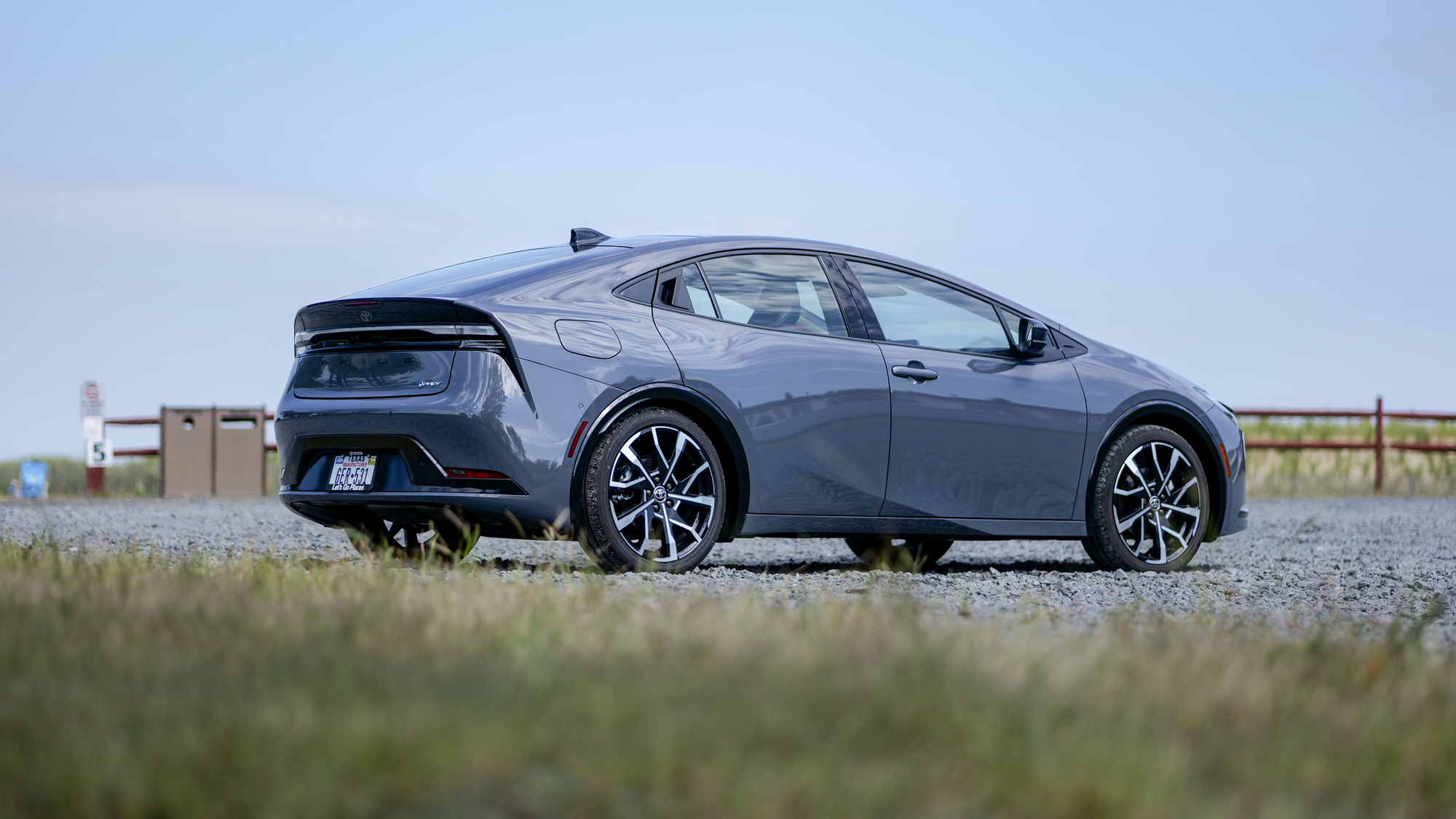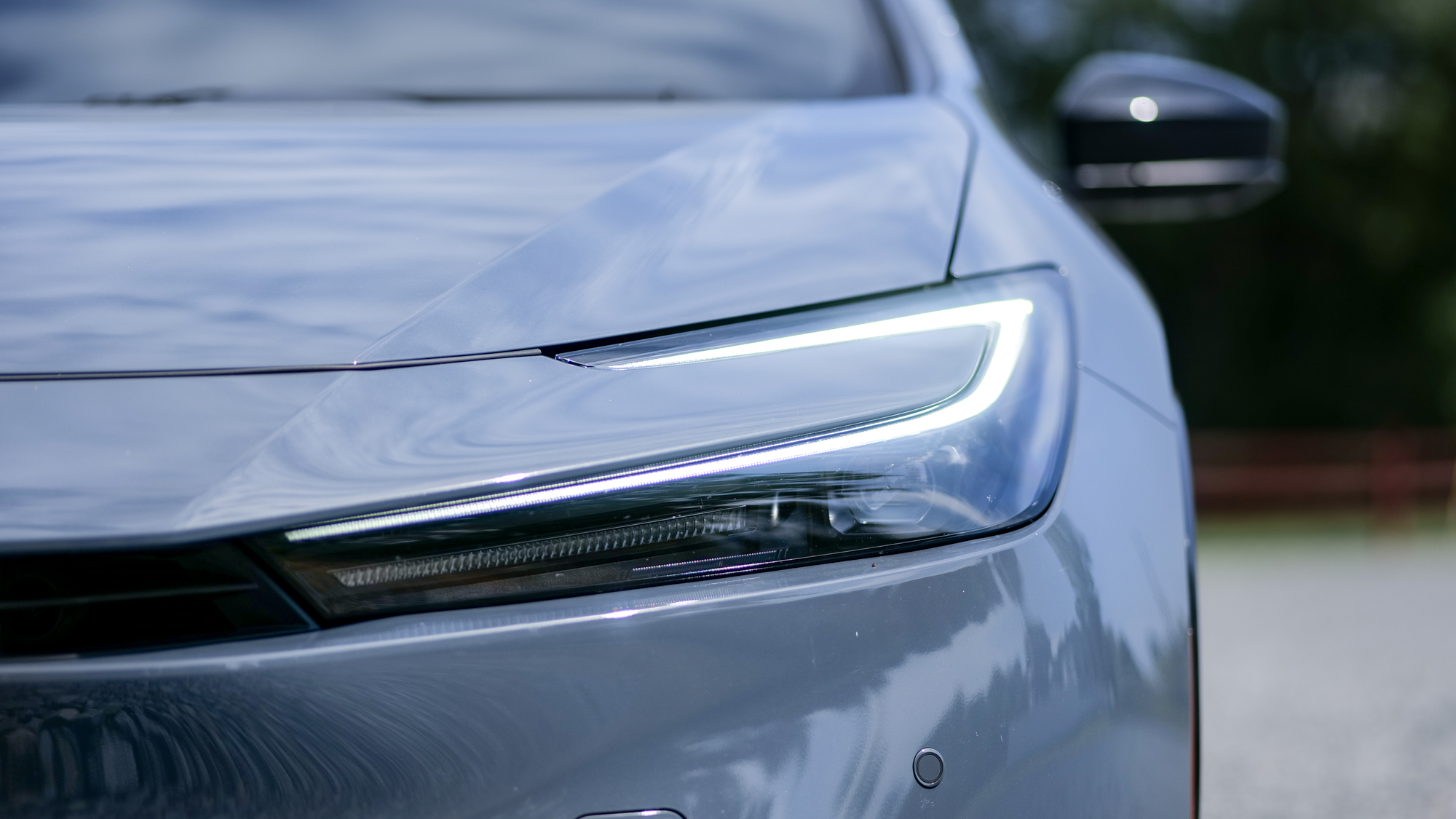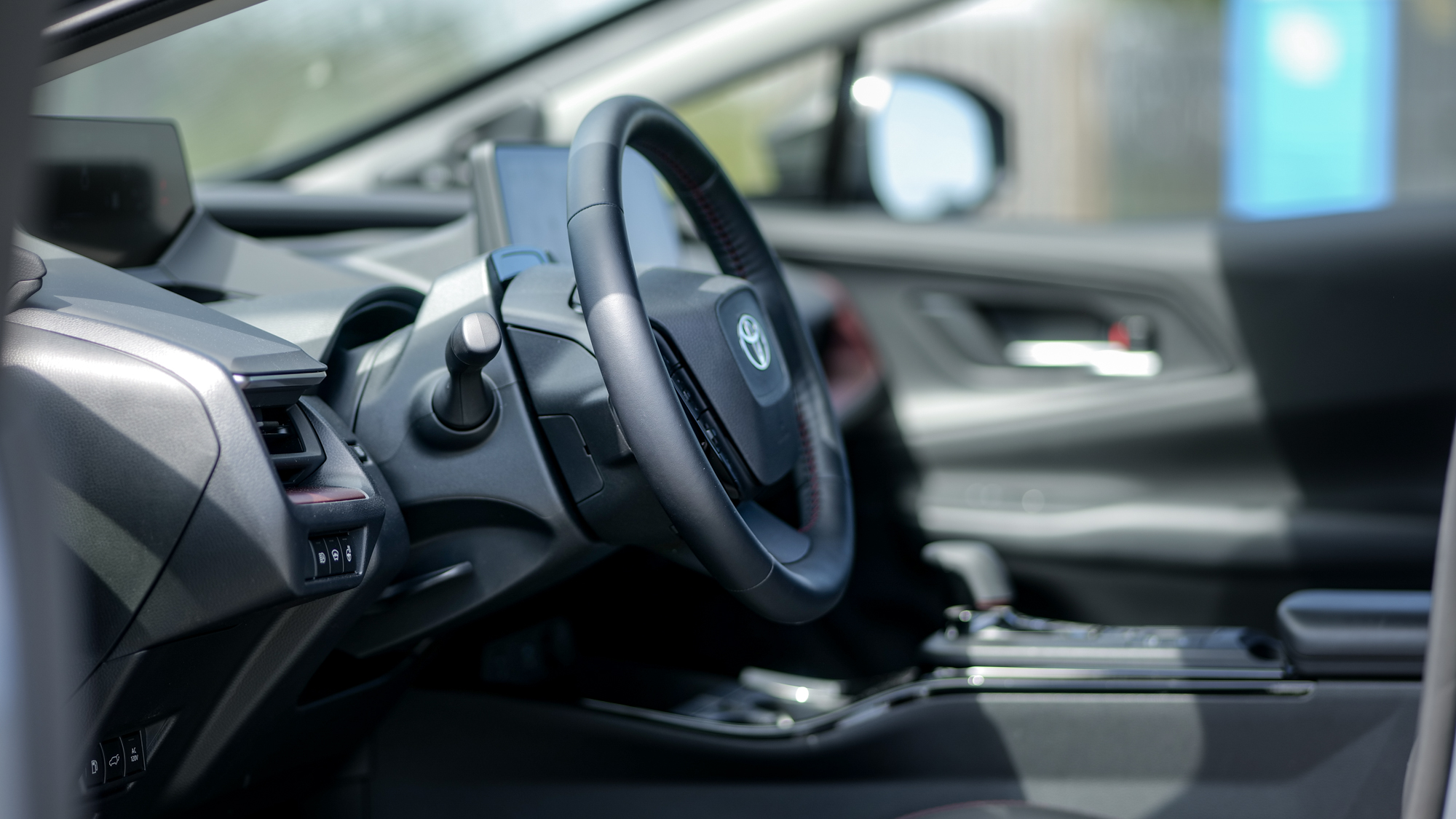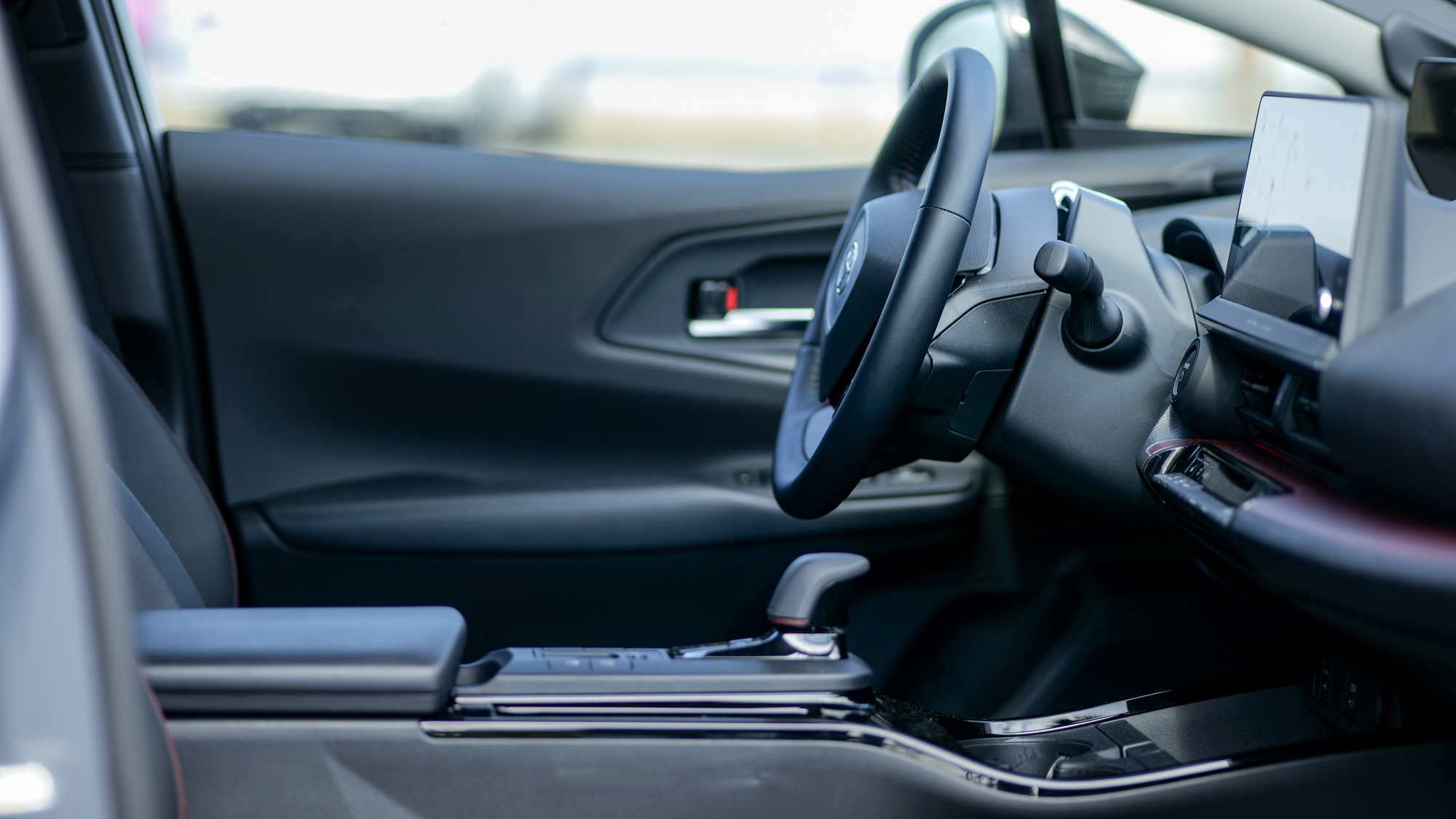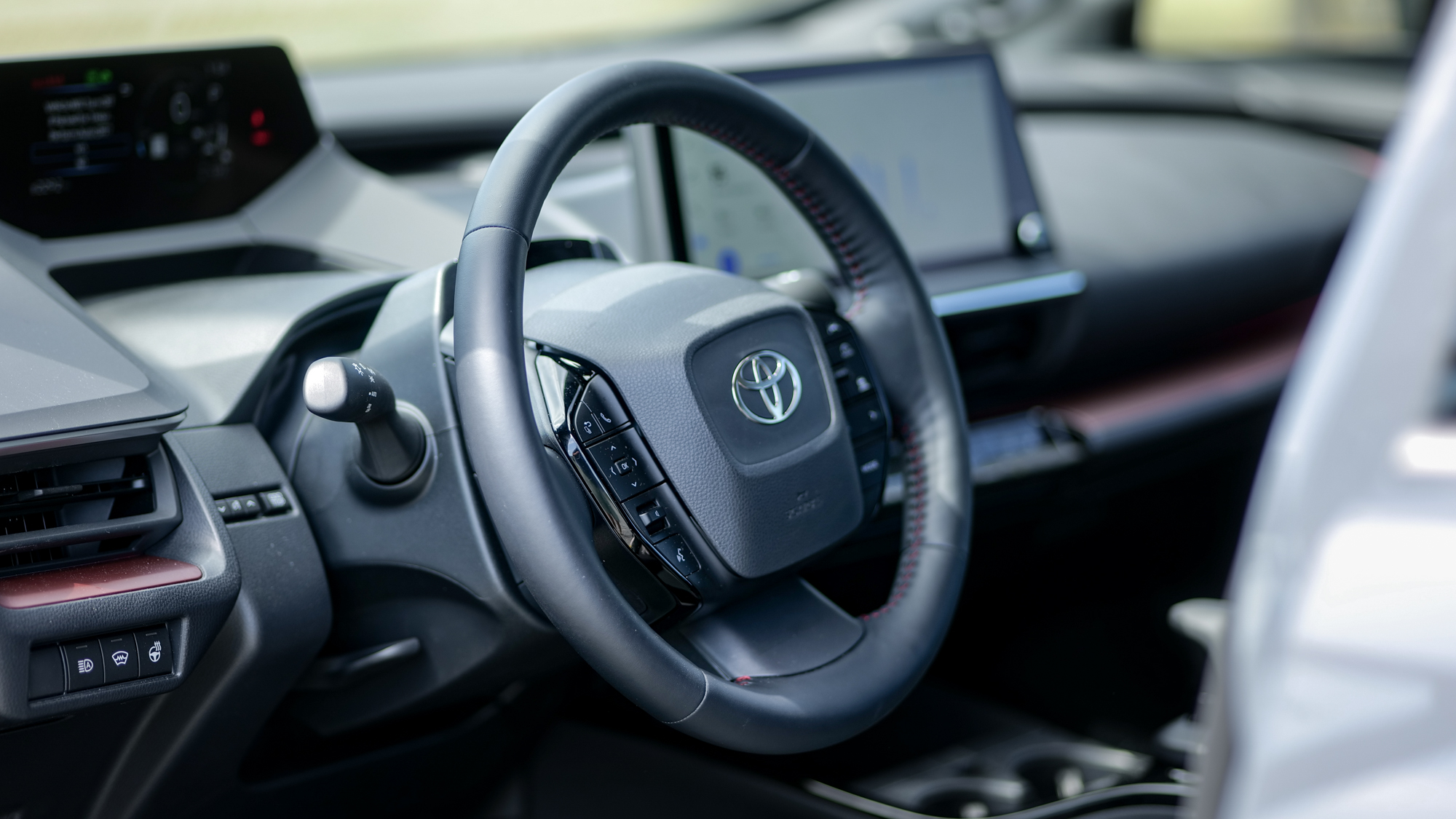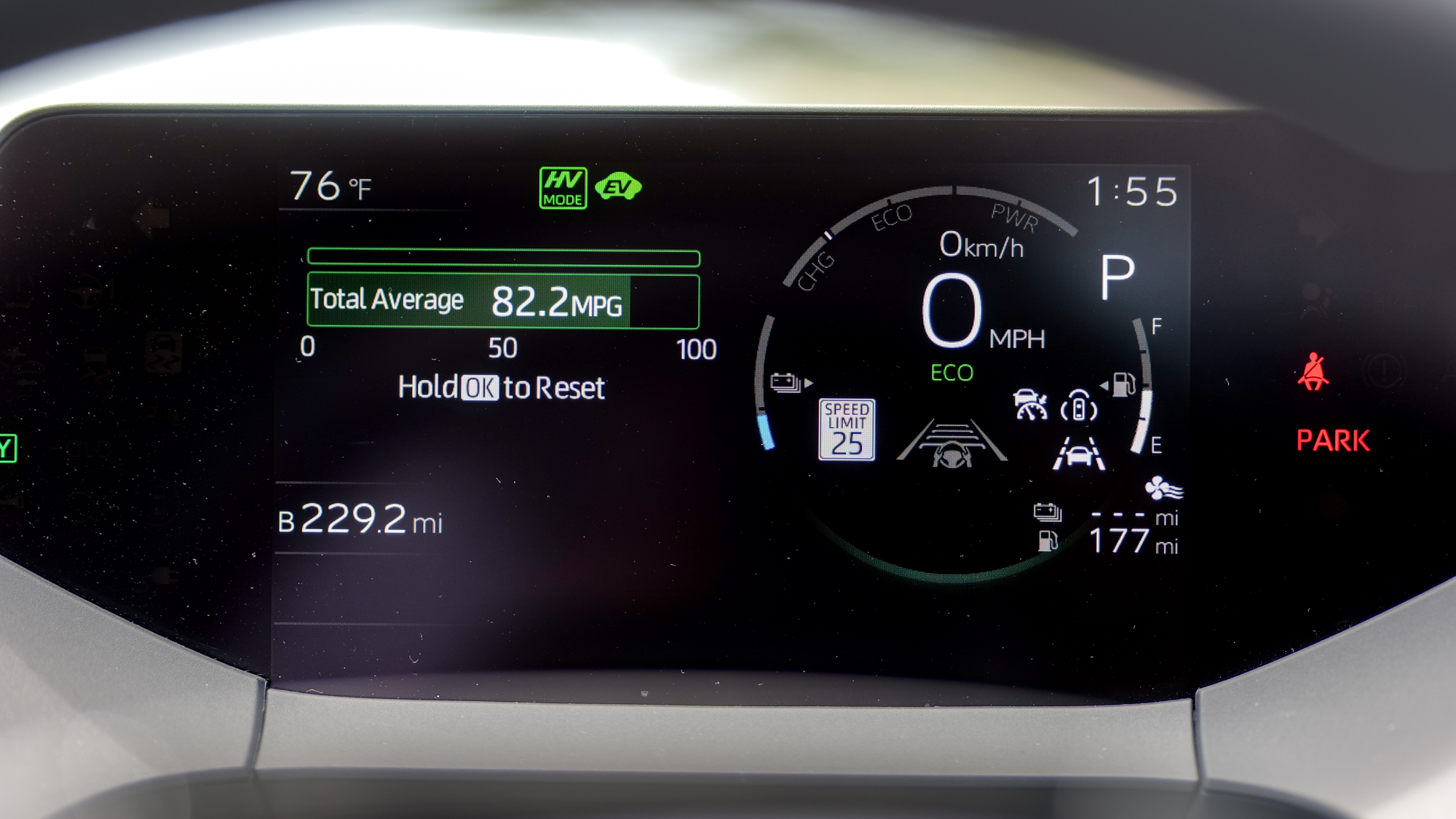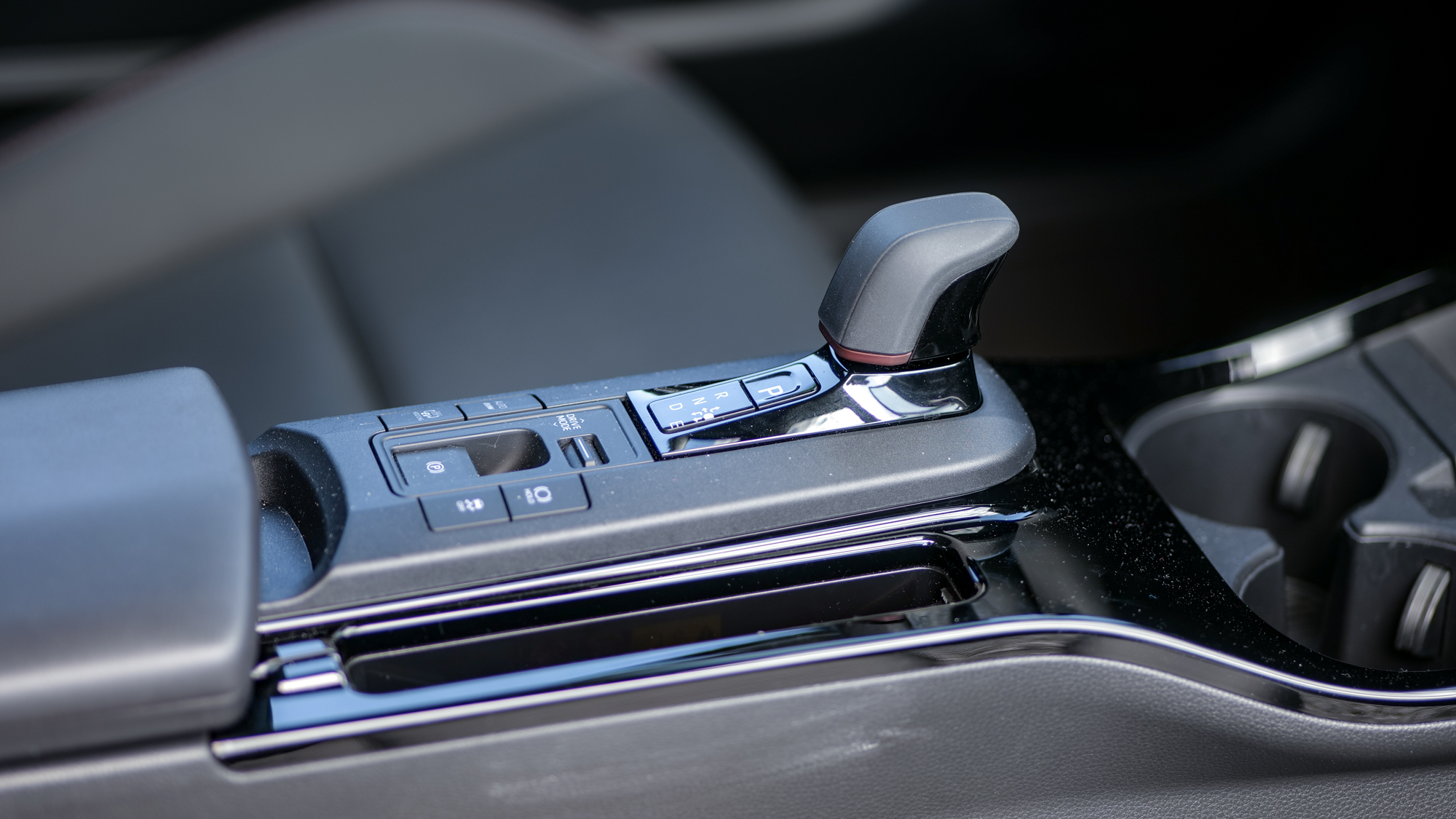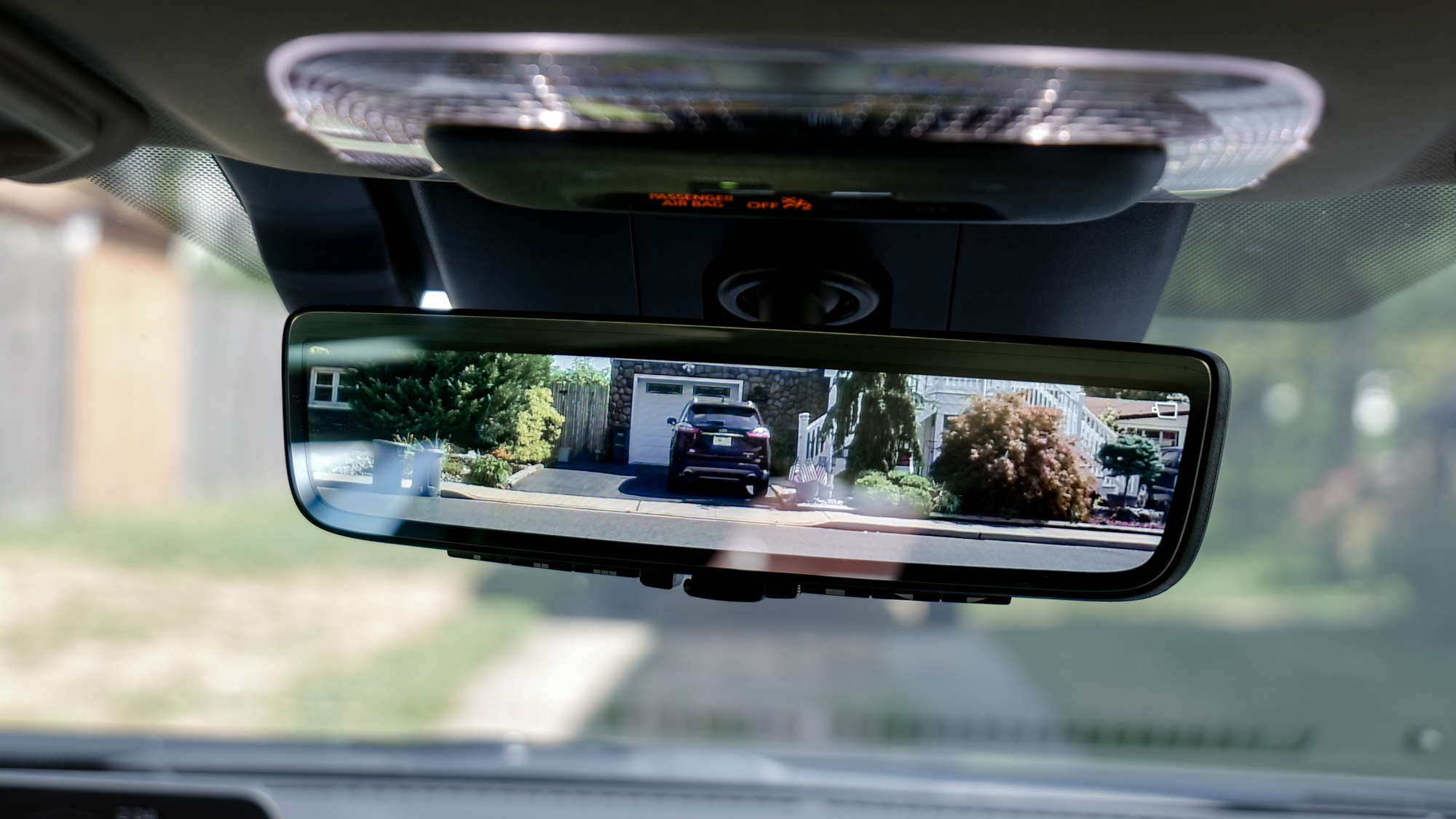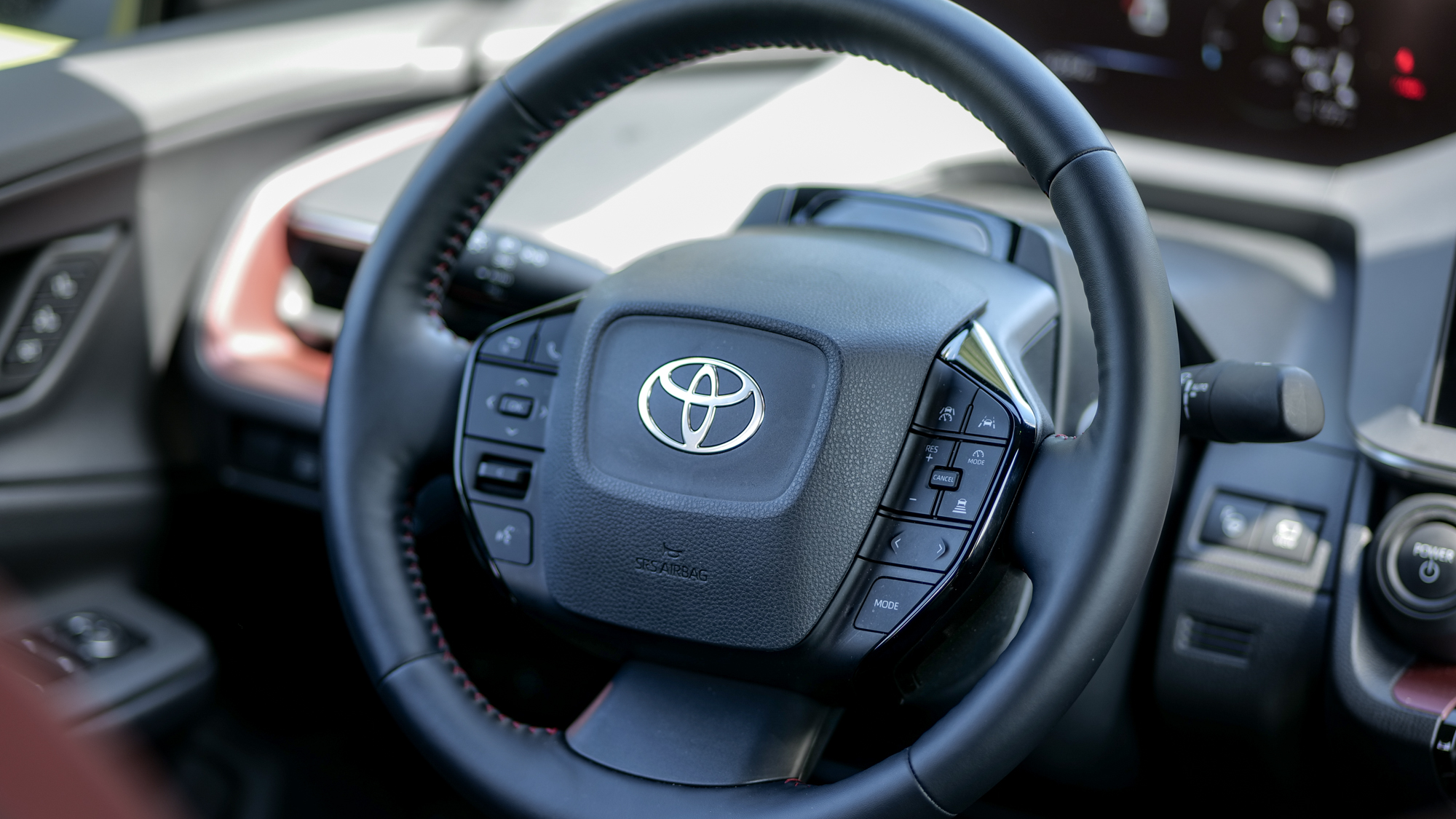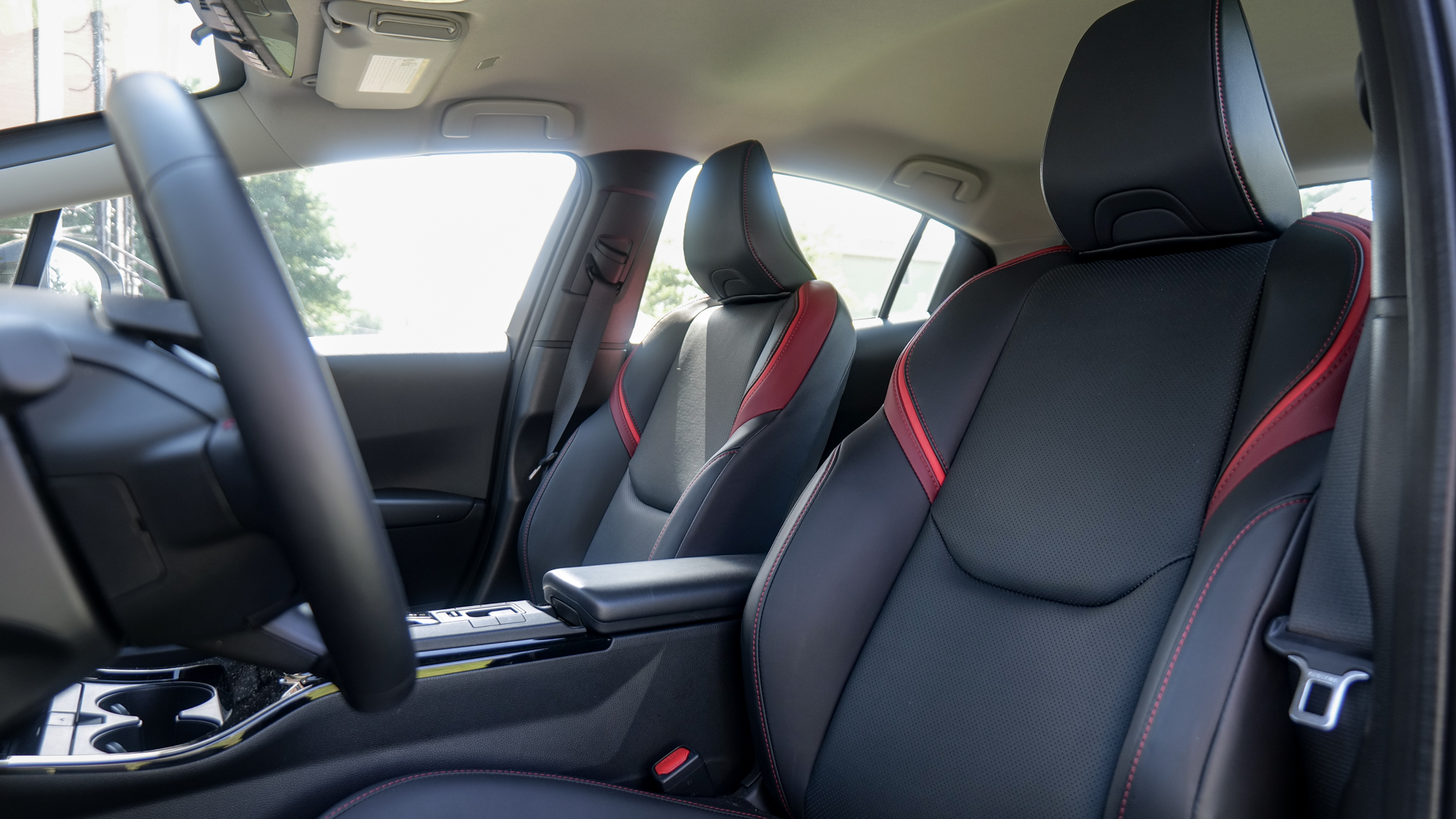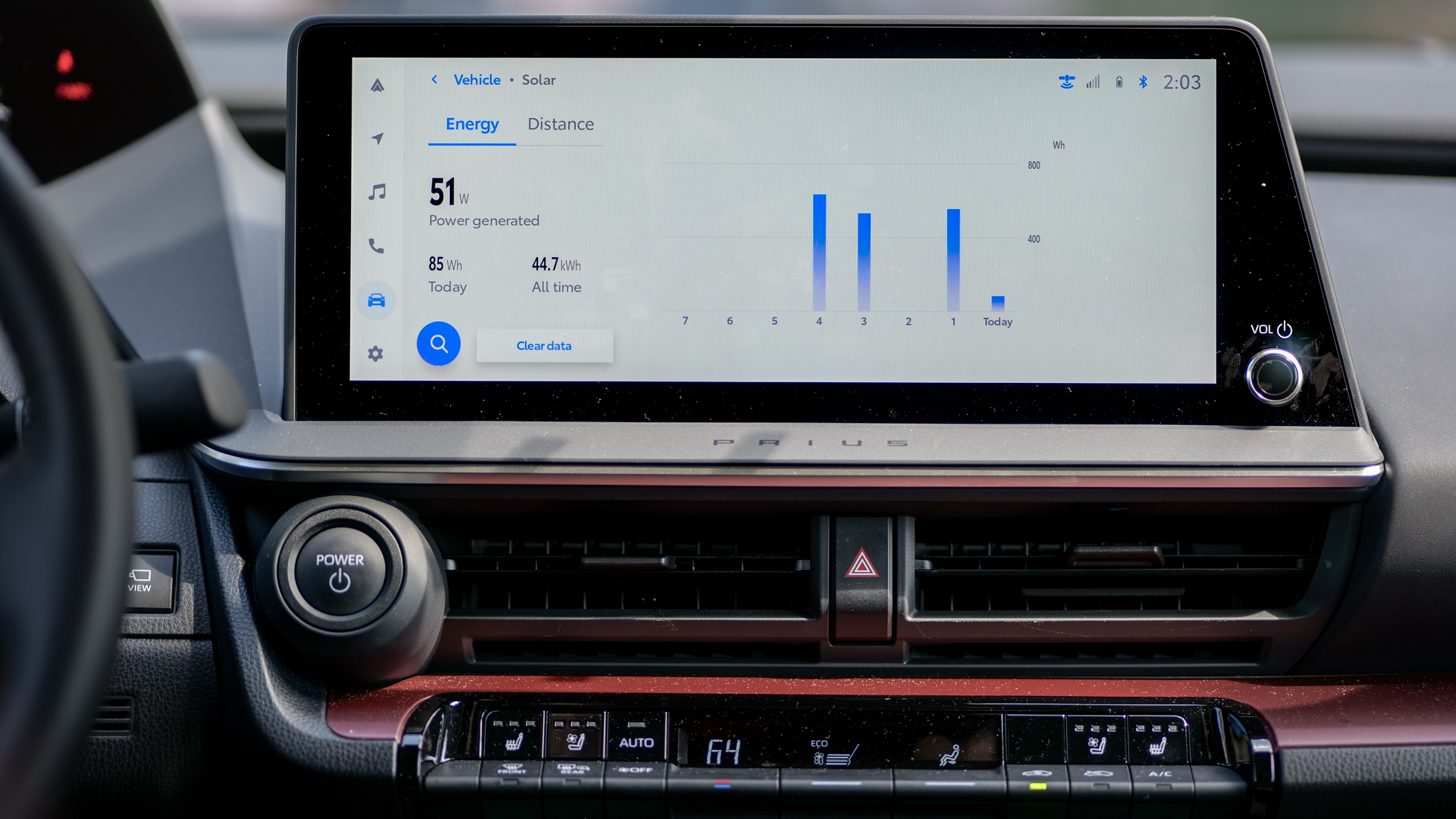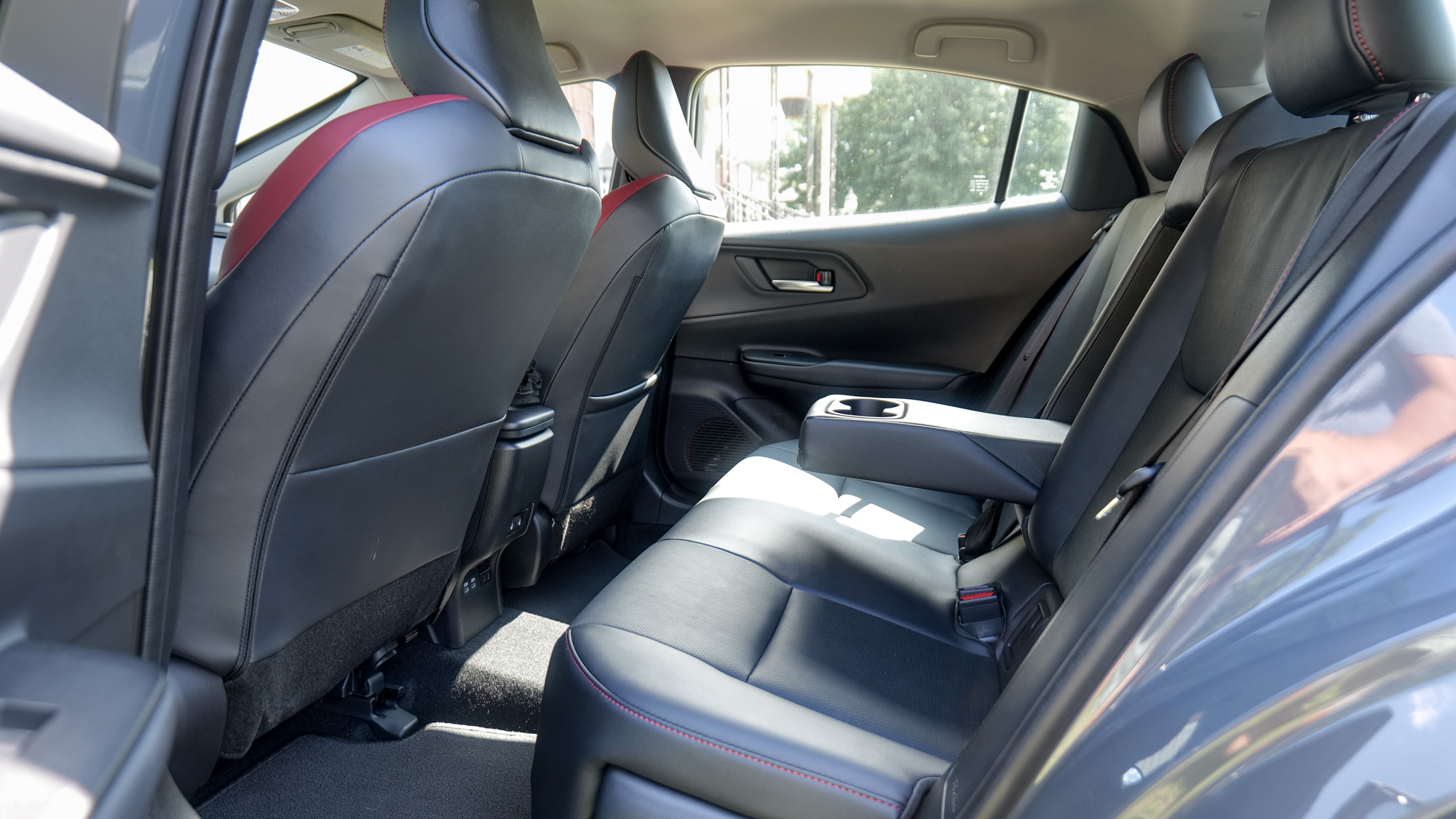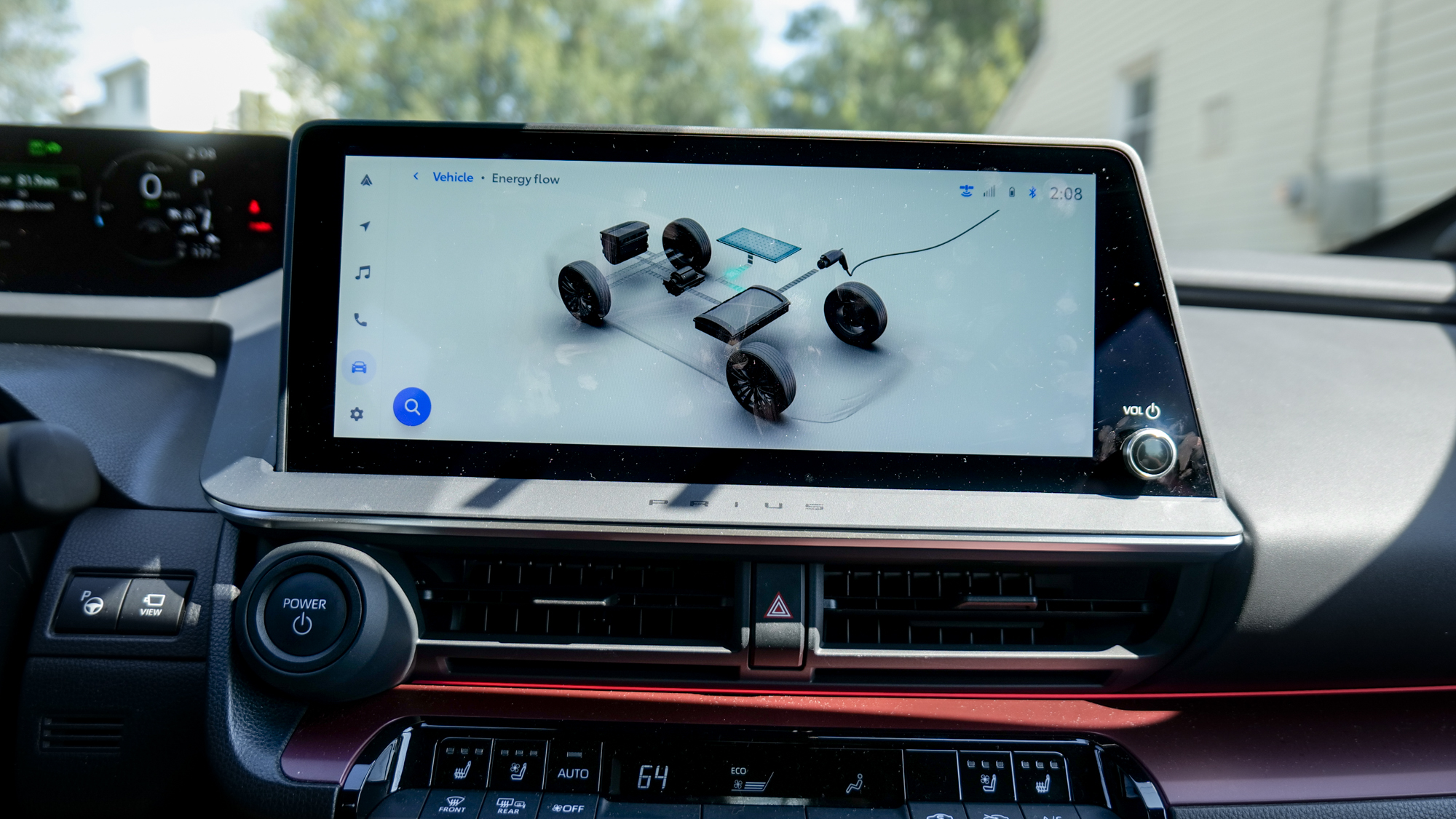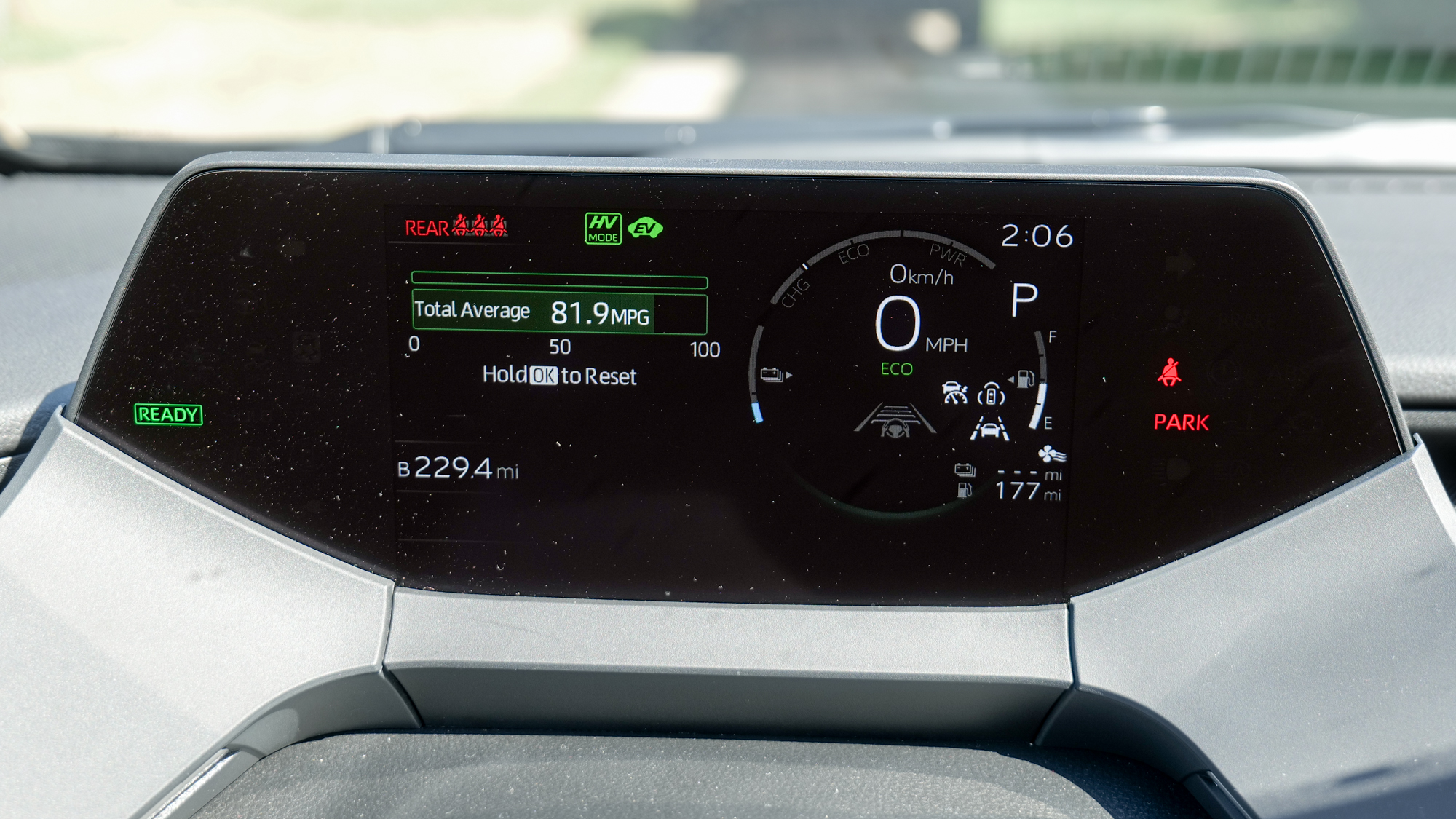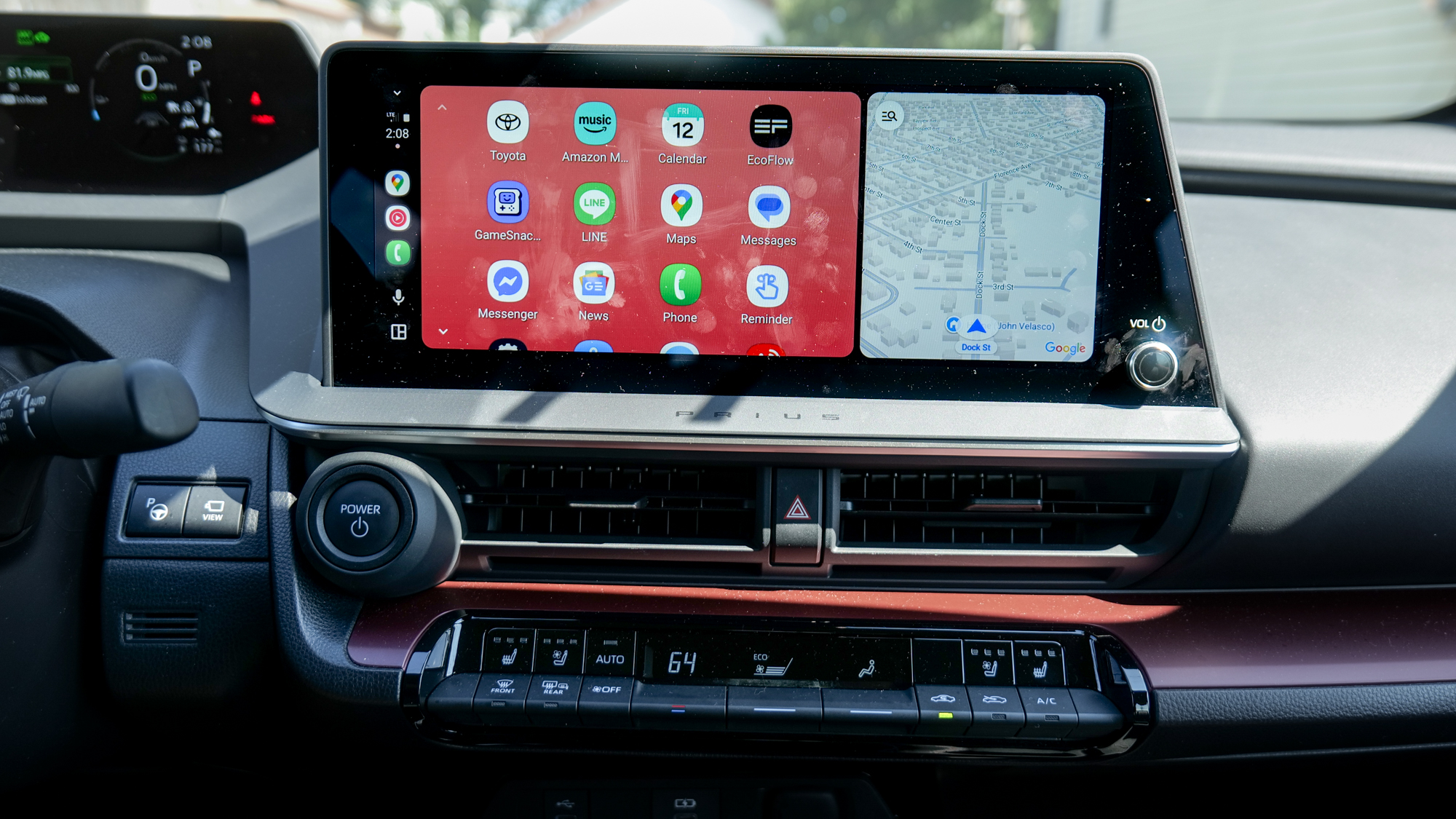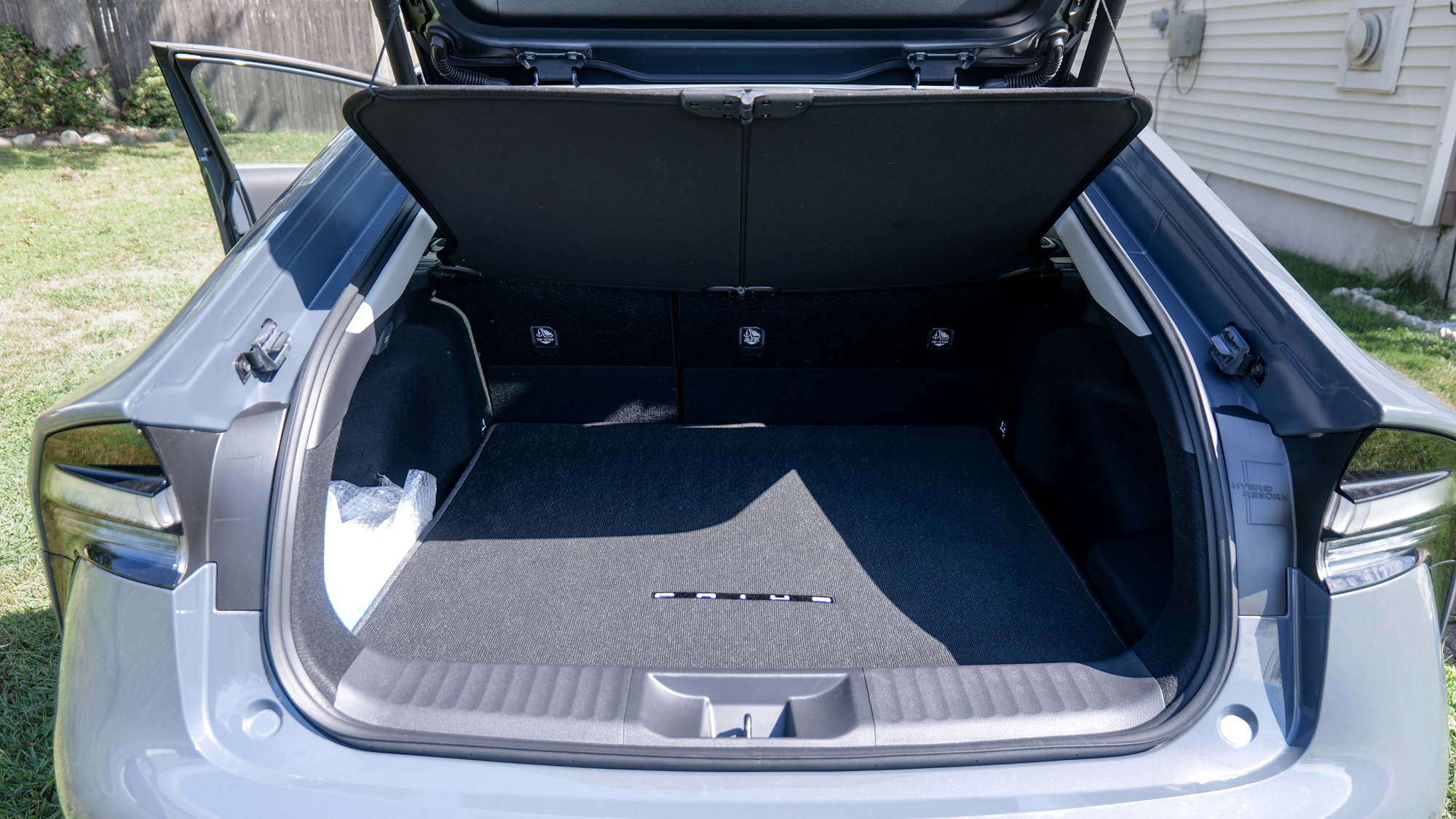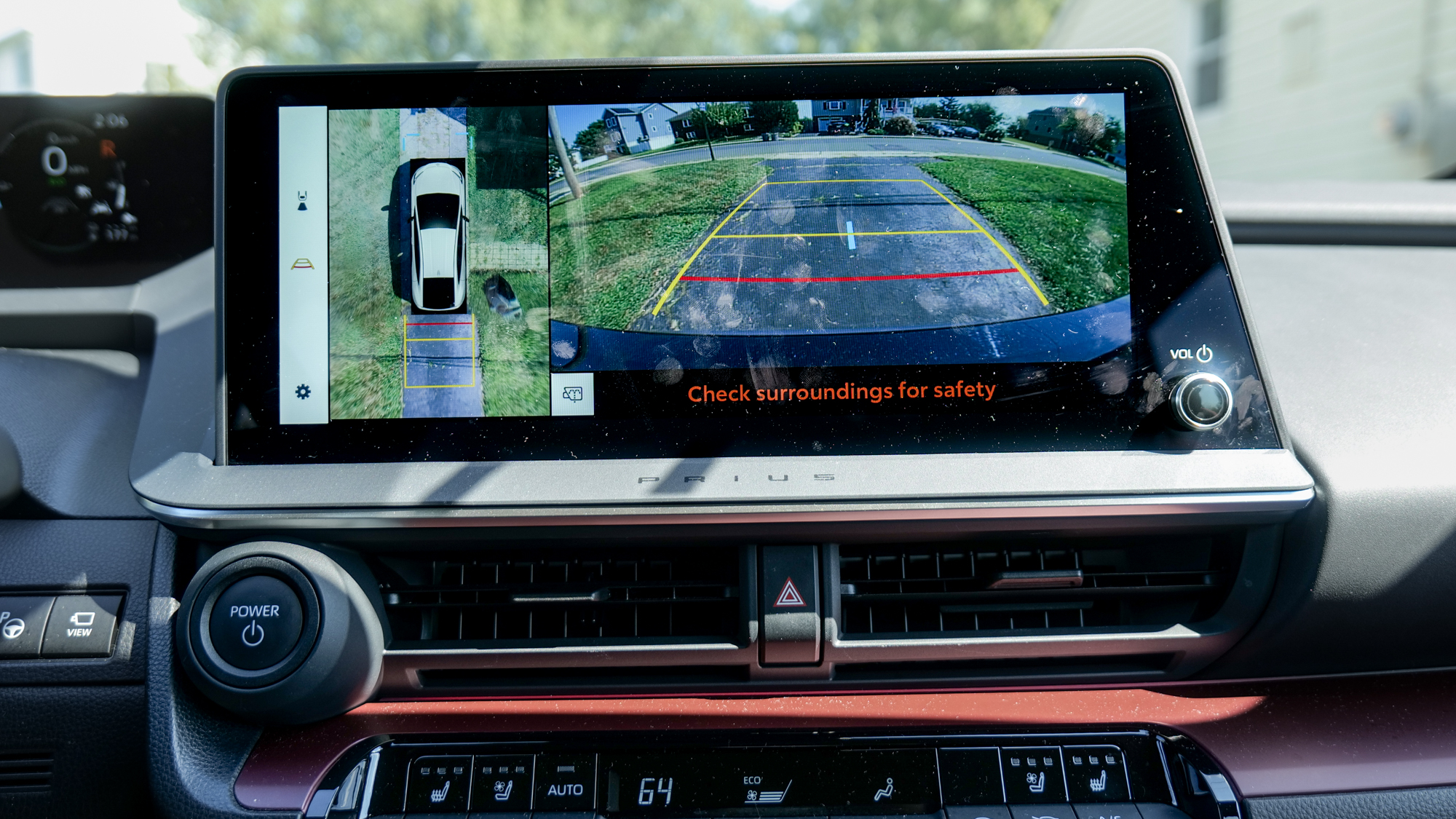Way before the electric car revolution began, Toyota was secretly implanting the benefits of electric power with the Prius. For more than 20 years now, it’s been the face of hybrid cars and proved how hybrids have better long term savings over traditional all-gas powered vehicles — and the 2025 Toyota Prius Plug-In Hybrid continues that idea.
I’ve been spoiled by efficient EVs such as the Lucid Air Touring, Hyundai Kona Electric, and even larger sized vehicles like the Subaru Solterra, but the Prius Plug-In Hybrid beats them all on price. More importantly, it follows in the same footsteps as its ancestors by driving the point of how electric power is the way of the future.
That’s because this Prius is a PHEV (plug-in hybrid vehicle), which can operate 100% off electric power up to 39 miles before it goes back on its gas-electric hybrid power. After driving the 2025 Toyota Prius Plug-in Hybrid XSE Premium for a week, I think it’s the best of both worlds. Here’s why.
2025 Toyota Prius Plug-in Hybrid: Specifications
| Row 0 – Cell 0 |
2025 Toyota Prius Plug-in Hybrid SE |
2025 Toyota Prius Plug-in Hybrid XSE Premium |
|
Engine |
2.0L 4-Cyl. ECVT FWD |
2.0L 4-Cyl. ECVT FWD |
|
Fuel Economy |
53 mpg city / 51 mpg highway / 52 mpg combined |
50 mpg city / 47 mpg highway / 48 mpg combined |
|
All-Electric Range |
44 miles |
39 miles |
|
Electric Battery Size |
13.6 kWh |
13.6 kWh |
|
Fuel Tank Capacity |
10.6 gallons |
10.6 gallons |
|
Horsepower |
220 hp |
220 hp |
|
Wheels |
17-inches |
19-inches |
|
MSRP |
$33,375 |
$40,070 |
|
Price Tested |
N/A |
$43,510 |
2025 Toyota Prius Plug-in Hybrid: Testing summary
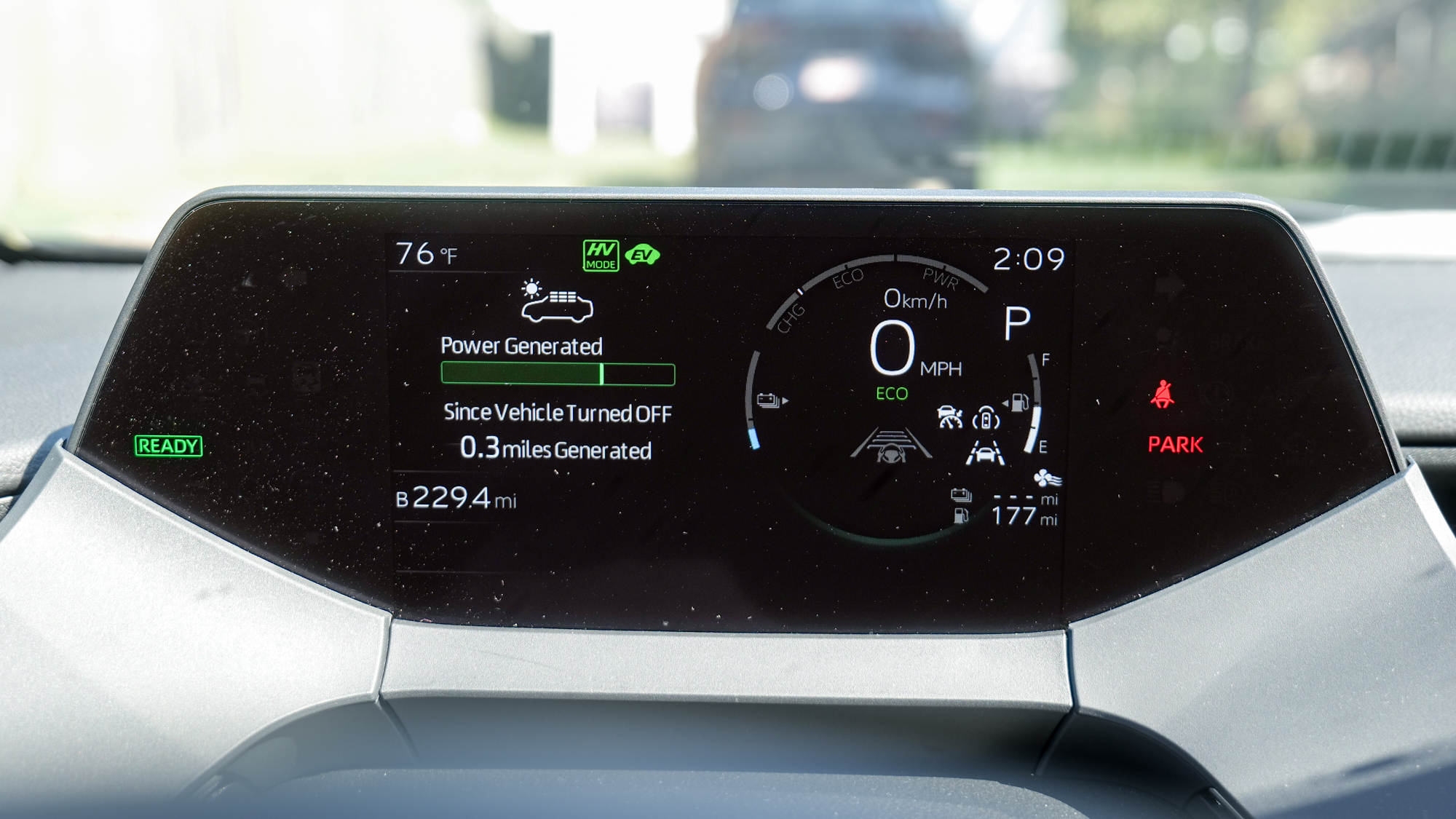
I drove a total of 229.4 miles during a week’s worth of driving with the Prius Plug-in Hybrid, accumulating an average fuel economy of 82.2 mpge. That takes into account the gasoline it consumed paired with the all-electric power I drove it on a couple of days. By the third day, I stopped charging the Prius’ battery overnight — resulting in a more accurate 49 mpg average.
That actually beats all the other previous hybrid vehicles I’ve tested, like the Honda Civic Hybrid and Toyota Corolla Cross Hybrid. And since I have 33 miles of all-electric range at my disposal, it means fewer fill-ups on gasoline.
Unlike other PHEVs I’ve tested that use up the dedicated battery’s all-electric power regardless of what driving mode they’re in, such as the Mazda CX90, you can actually “save” the all-electric power of the Prius Plug-In Hybrid for a later time. I like this because I’m able to drive it in HV mode and uses mostly the gasoline to propel the vehicle, saving the all-electric power range
| Row 0 – Cell 0 |
2025 Toyota Prius Plug-in Hybrid XSE Premium |
2025 Toyota Corolla Cross Hybrid S |
2025 Honda Civic Sport Hatchback Hybrid |
|
Price tested |
$43,510 |
$34,705 |
$41,470 |
|
Total miles driven |
229.4 miles |
215.4 miles |
248.5 miles |
|
Average Fuel Economy |
82.2 mpge |
45 mpg |
48.1 mpg |
|
Best short distance fuel economy |
99.9 mpg* |
63 mpg |
63.1 mpg |
|
Best long distance fuel economy |
99.9 mpg* |
44.3 mpg |
50.2 mpg |
2025 Toyota Prius Plug-in Hybrid: What I Like
It drives like an EV
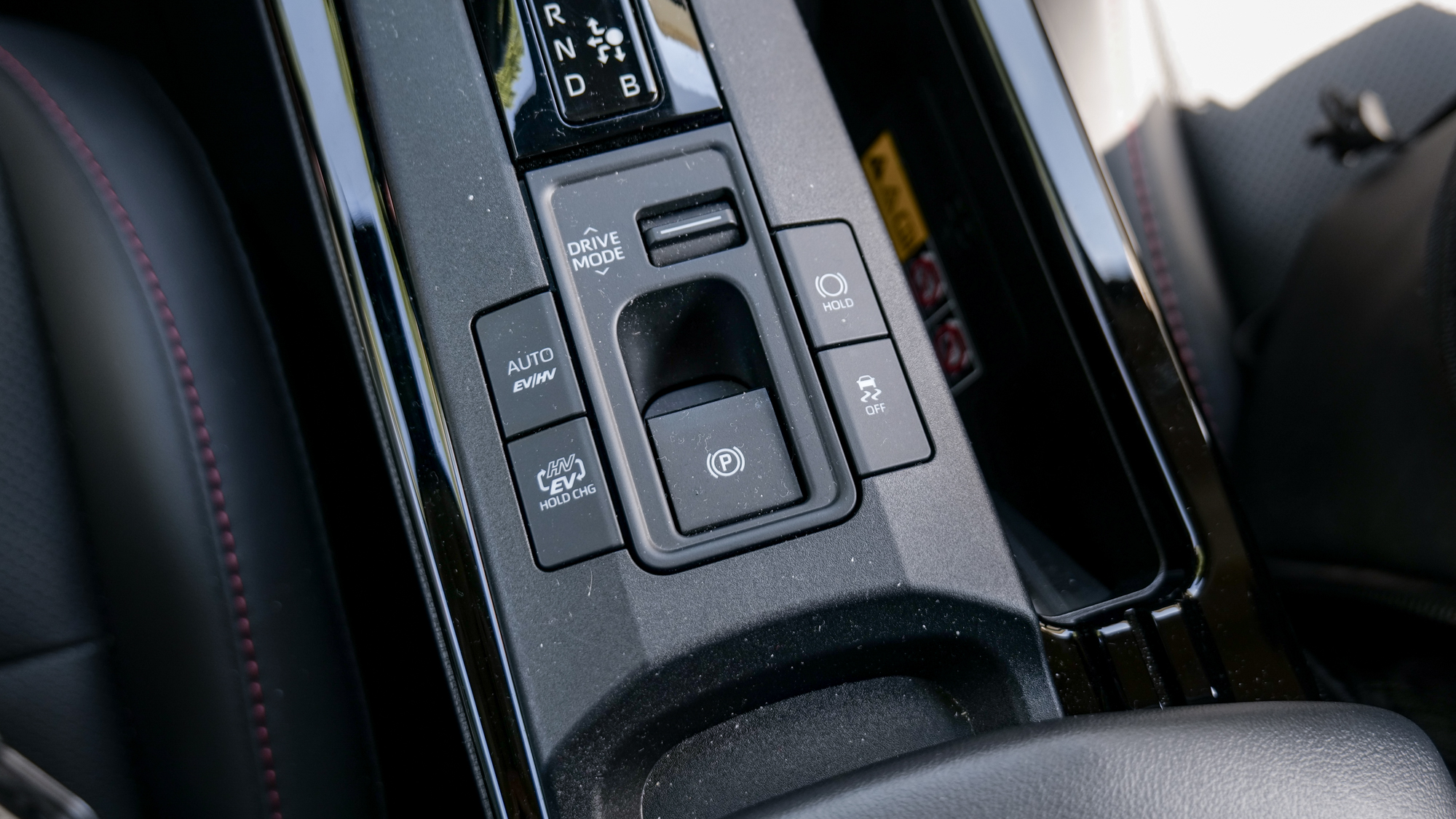
Since it’s a PHEV and not just your standard hybrid, the 2025 Toyota Prius Plug-in Hybrid XSE Premium drives much like an EV — but only when it’s in EV mode. There’s a button near the gear shifter that makes it so that the Prius runs off the 13.6 kWh battery, giving it roughly 33 miles of all-electric range.
I really enjoy driving the Prius in this mode because the acceleration and responsiveness feels more like an EV. Getting to cruising speed is smooth with one continuous motion, in contrast to how I can feel the gears shifting when it runs off gas power in hybrid mode. It’s what I like to call a small taste of pure electric power, but on something that can run off gasoline as well.
Solar panel roof generates power for the car
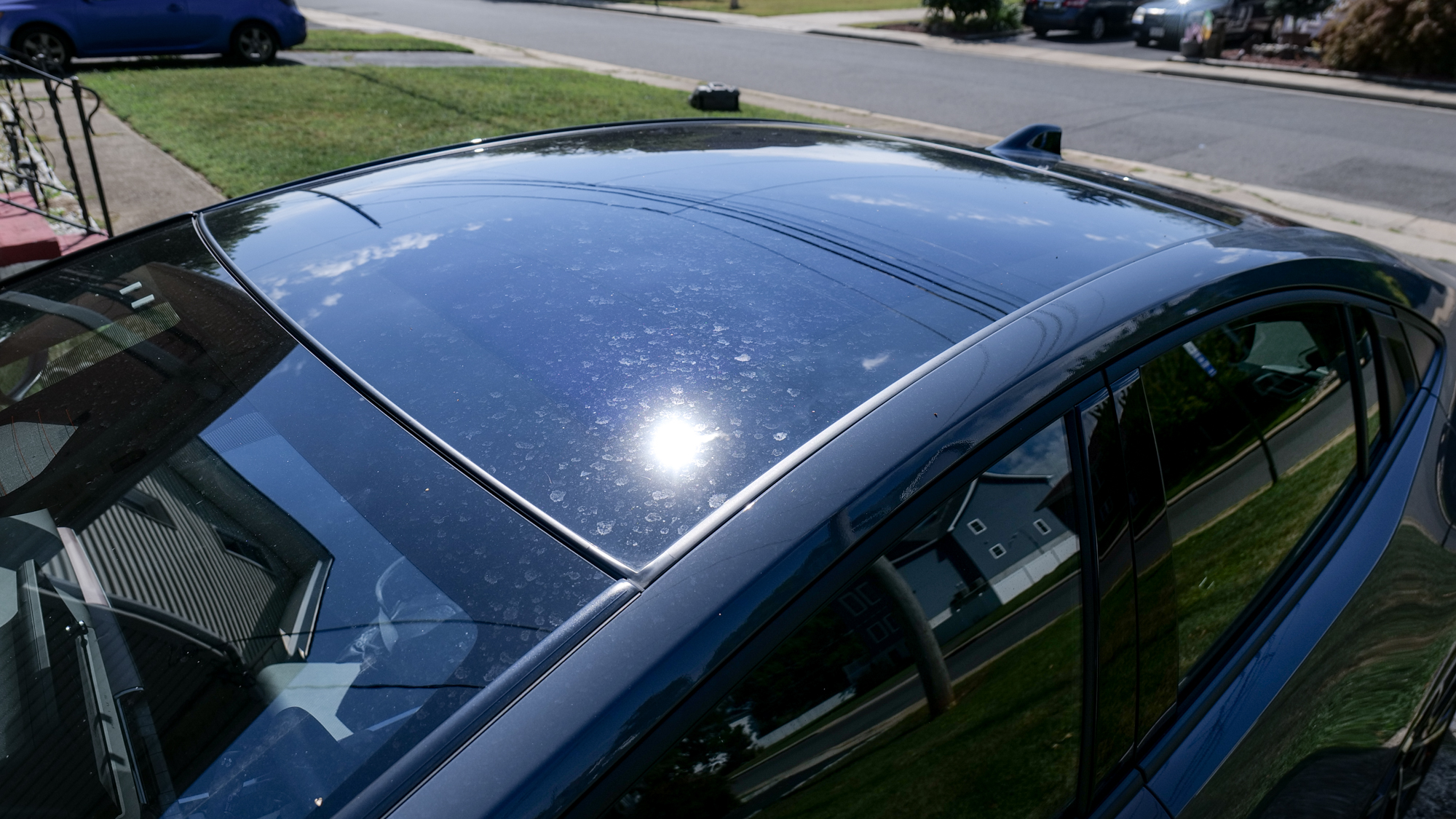
You can get a solar panel roof as a $610 option, which helps supply power back to the vehicle. I think it’s valuable because I’ve seen the panel pull in over 100W at times during the day. Even though you shouldn’t have the expectation that it’ll completely charge the battery, it does help out in other ways.
For example, the panel will charge the battery to some extent while the Prius is parked and it’s sunny out. While driving, Toyota also says the solar panel roof supplies power to auxiliary functions. Every bit of electricity it can generate is beneficial, which I think pays for itself in the long run.
Sportier design, high-tech interior
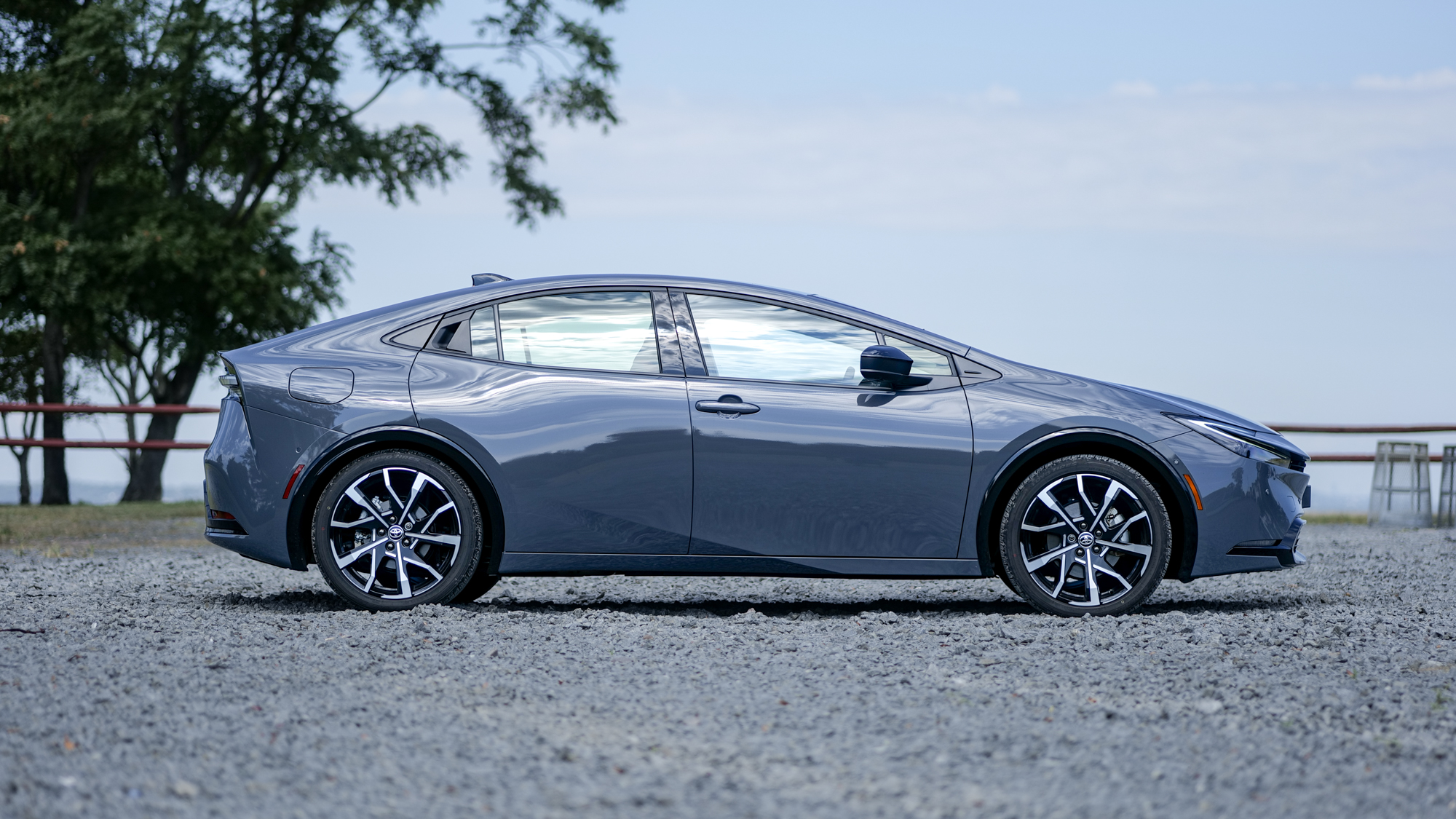
For a long time, the Prius had a distinguishable look on the road — but not in a good way, due to its clunky design. That’s no longer the case because of the sportier design cues this model has. From the front, I love how the Prius Plug-In Hybrid tapers off and meets a subtle grill. From the side, though, its sleek, aerodynamic profile makes it look less boxy than previous generations.
On the inside, the sportier design language is evident in black and red-accented bucket seats. Not only does that make the Prius look fresh and more modern, but I also like how its 12.3-inch display adorns the center console.
You’ll save on gas fill-ups
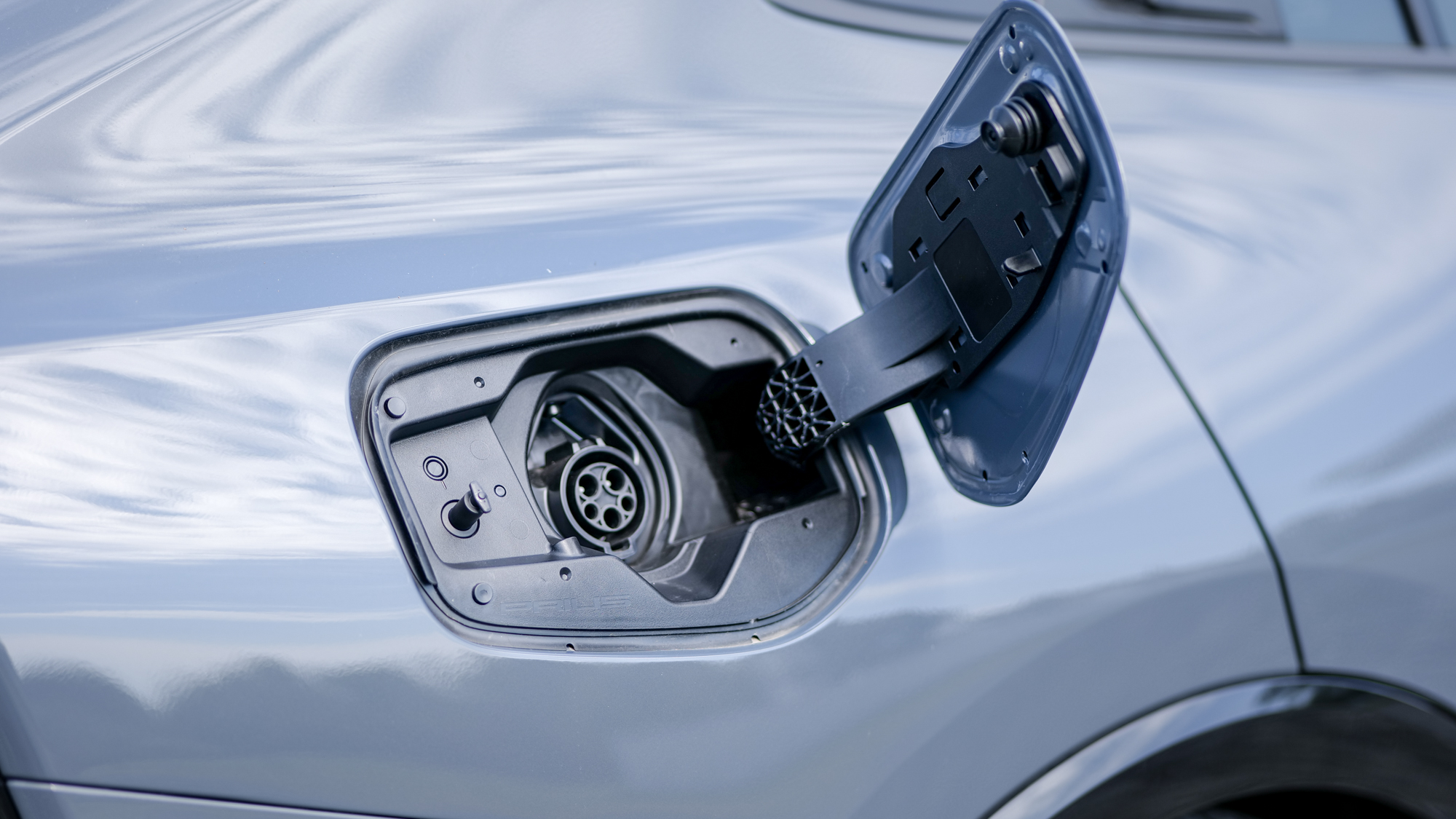
I know a lot of people who are hesitant to upgrade to an all-electric vehicle, which is why PHEVs like the Prius Plug-In Hybrid exist. I still think it offers the best of both worlds because it takes away the range anxiety some people have about EVs, while still giving drivers a taste of the benefits of all-electric power.
By charging the Prius nightly, you’ll have around 33 miles of all-electric range at your disposal — which can save you in the long run with gas fill-ups. I charged the Prius overnight the first two days of having it, and each time it yielded a full charge. Paired with its EPA-estimated 48 mpg fuel economy, you’ll be saving big on fuel costs with this Prius.
Plenty of utility as a hatchback
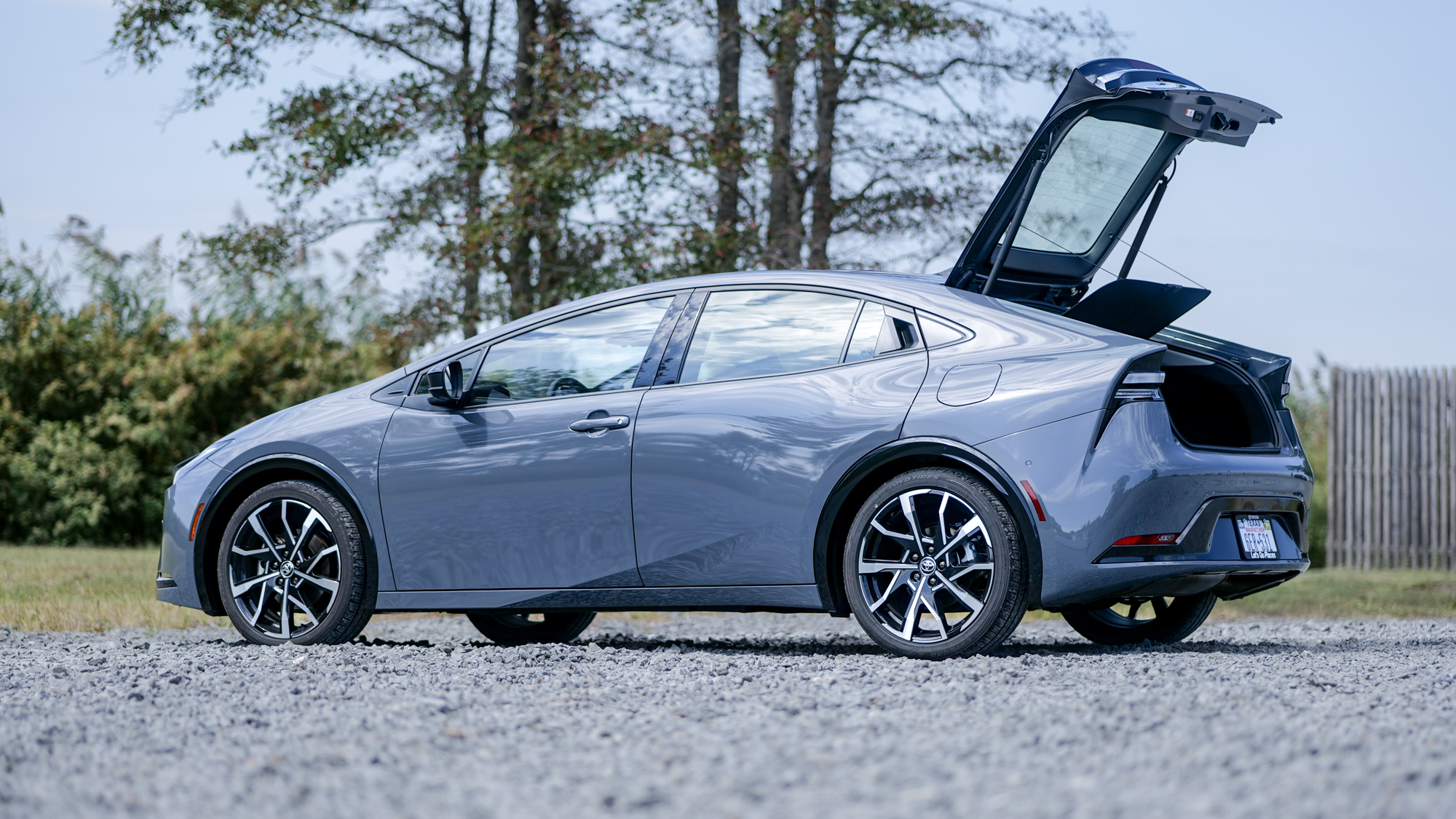
Since it’s a hatchback, I really like the utility the Prius Plug-In Hybrid offers in accommodating larger sized stuff inside of it. The trunk is already spacious enough to fit my Jackrabbit OG2 Pro micro ebike without folding it down, while pulling down the seats I was able to fit several plastic boxes I picked up from Costco.
2025 Toyota Prius Plug-in Hybrid: What I Don’t Like
Driver’s display is set too high
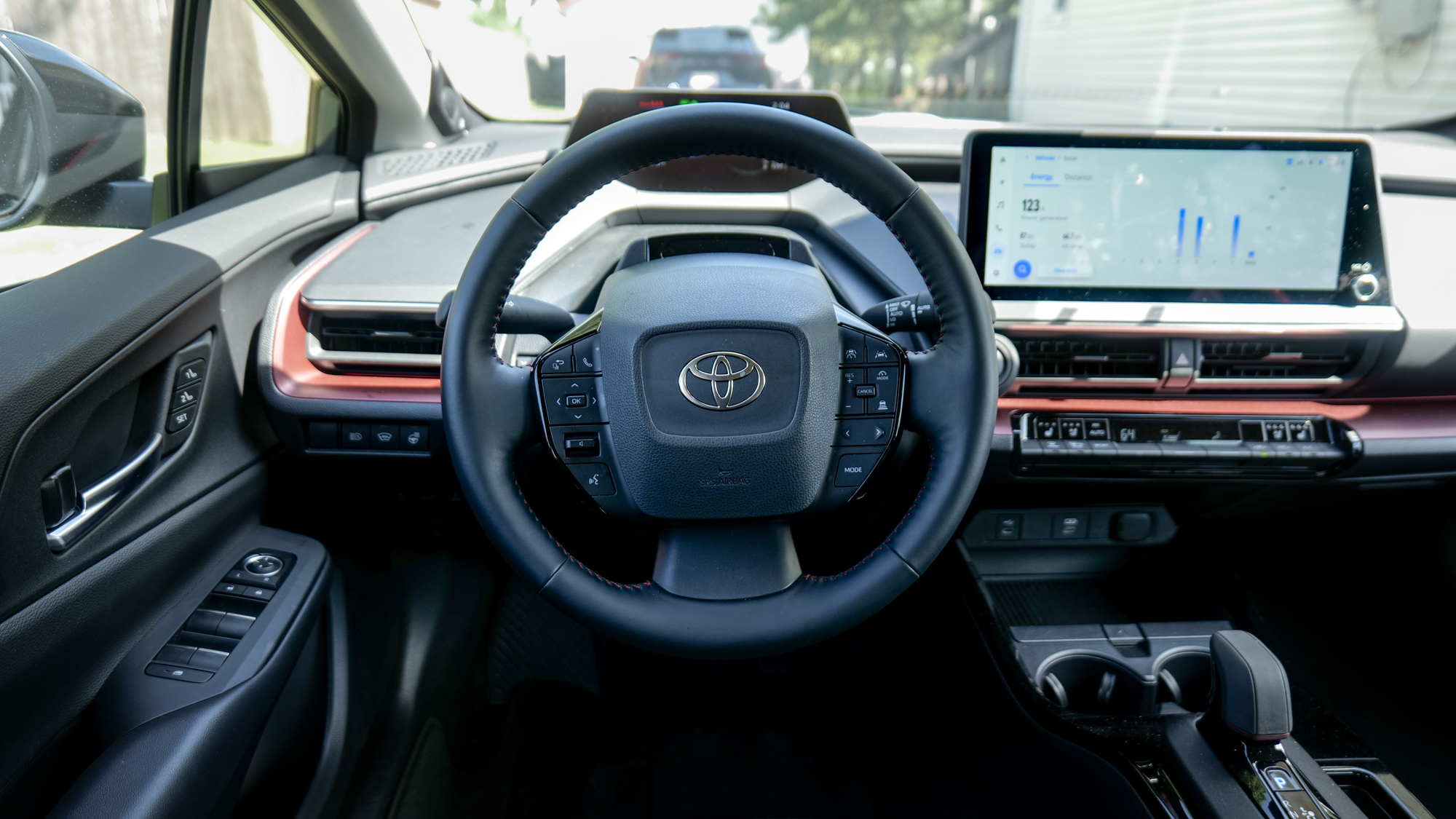
Similar to the all-electric Toyota bZ4X, the driver’s display on the Prius feels way too high on the dashboard. This makes it a bit distracting trying to look beyond the road due to how it’s positioned. And depending on how you have the steering wheel positioned, it can sometimes obscure the driver’s display.
Additionally, I don’t like how the interface looks really busy with the driver’s display. All of the icons, speedometer information, and adaptive cruise control details overcrowd the display.
Speaker performance is so-so
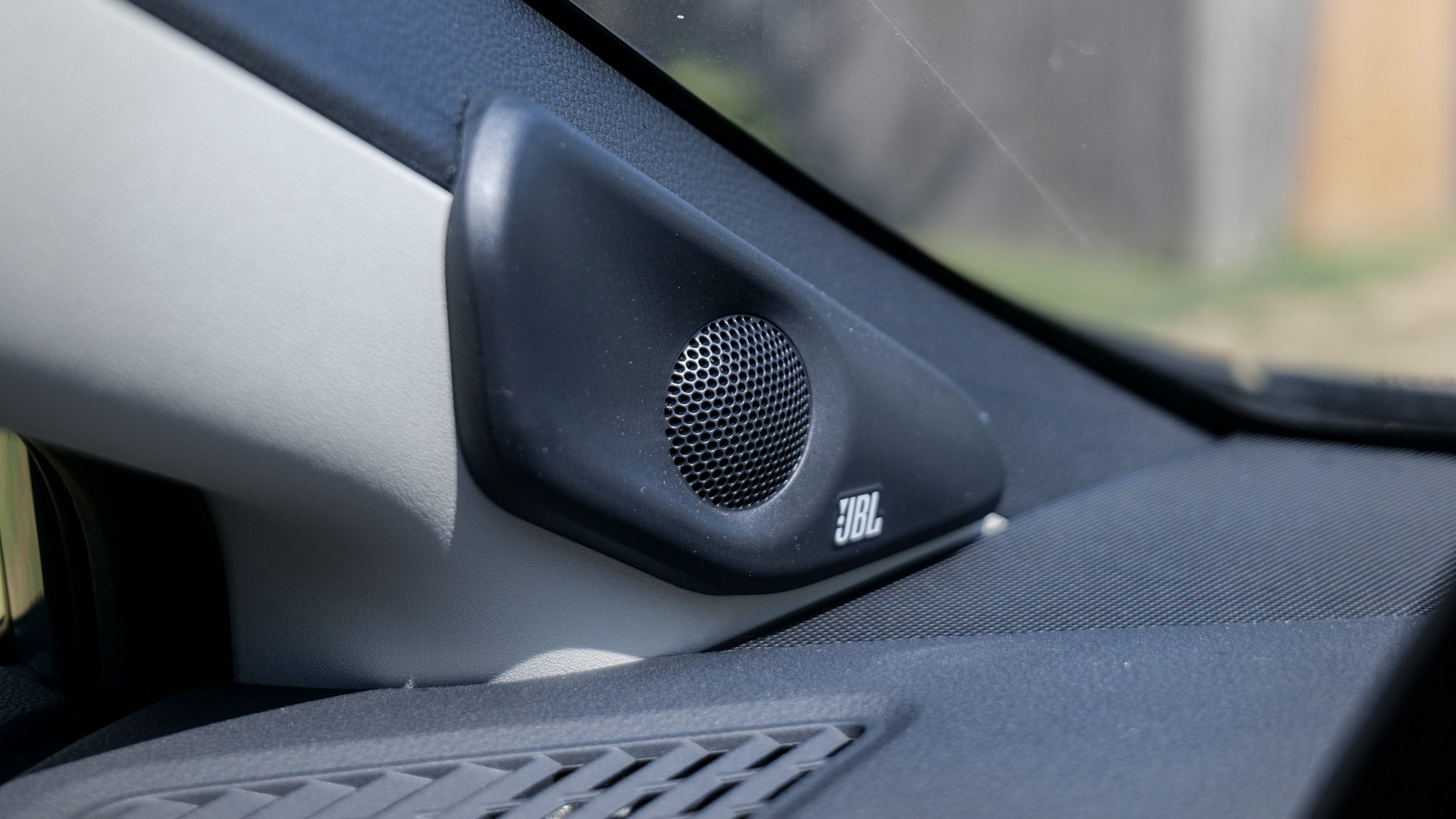
I love blasting the music in all the vehicles I test out, but despite a JBL speaker system, the Prius sounds a bit flat — even when I tweak the equalizer settings. It’s especially noticeable with the highs in The Midnight’s new album when the synthesizers hit their high notes in some of the tracks.
2025 Toyota Prius Plug-in Hybrid: Bottom Line
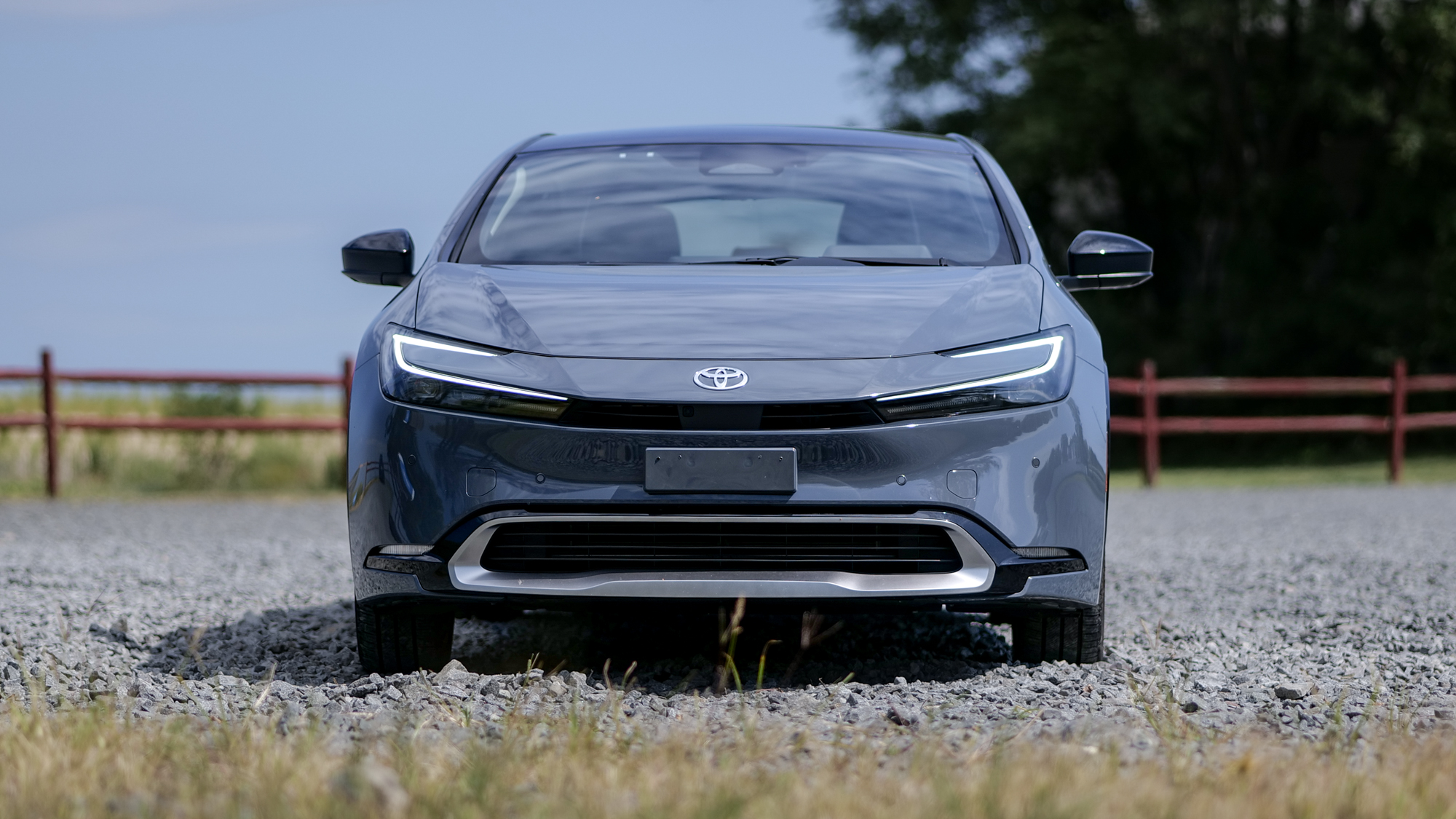
What makes the 2025 Toyota Prius Plug-In Hybrid appealing is that it’s not obnoxiously priced. The cheapest EVs still fetch for about $40,000 on average, whereas the Prius Plug-In Hybrid starts at about $34,000. That might not seem like a substantial difference, but it does when people look at it at face value.
I cannot stress enough about how this Prius offers the best of both worlds: a gas-powered hybrid car that gets outstanding fuel economy, with a small sampling of all-electric power. By using its electric power and charging it nightly, you’ll be able to lessen your need to refuel it. Plus, I really like how the Prius Plug-In Hybrid’s sleeker design and sportier interior make it more tasteful to drive.
Follow Tom’s Guide on Google News and add us as a preferred source to get our up-to-date news, analysis, and reviews in your feeds. Make sure to click the Follow button!
